My most current blog entry:
Entries in Castle (21)
Photos of the West of Scotland
 Wednesday, April 6, 2016 at 11:36PM
Wednesday, April 6, 2016 at 11:36PM My wife's sister visited from Hong Kong . . . that meant a ROAD TRIP back along the locks and islands of the west of Scotland. We had wonderful weather . . .
 The joy of driving around the west of Scotland is the ever-changing vistas of the lochs and fjords.
The joy of driving around the west of Scotland is the ever-changing vistas of the lochs and fjords.
 The Scottish vistas often include a castle, or castle ruin or two.
The Scottish vistas often include a castle, or castle ruin or two.
 There are so many things to see and photograph along the way.
There are so many things to see and photograph along the way.
 We were in full explore mode: driving down a small road, I saw a sign that said 'smokehouse next right' . . . which led us through an enchanted, mossy wood.
We were in full explore mode: driving down a small road, I saw a sign that said 'smokehouse next right' . . . which led us through an enchanted, mossy wood.
 We stopped at the smokehouse and had wonderful fish and corn chowder . . . afterward I explored the nearby forest.
We stopped at the smokehouse and had wonderful fish and corn chowder . . . afterward I explored the nearby forest.
 Our route brought us back to the port town of Oban (for the 4th time!). My wife and her sister loved the oysters there: "The Best Oysters In The World" they both proclaimed!
Our route brought us back to the port town of Oban (for the 4th time!). My wife and her sister loved the oysters there: "The Best Oysters In The World" they both proclaimed!
 The light around Oban is very special.
The light around Oban is very special.
 The sunset that night was magical: the sun, the sea, the surfaces, the story, the clouds reflecting . . .
The sunset that night was magical: the sun, the sea, the surfaces, the story, the clouds reflecting . . .
 I wasn't the only person who found the sunset captivating.
I wasn't the only person who found the sunset captivating.
 OK, one more irresistible Oban harbour sunset.
OK, one more irresistible Oban harbour sunset.
 The gorse was in fine yellow bloom as we headed out over the bridge leading north from Oban.
The gorse was in fine yellow bloom as we headed out over the bridge leading north from Oban.
 Lovely old train trestle along our way to the sea.
Lovely old train trestle along our way to the sea.
 While skirting the end of Loch Ern in a driving rain squall, we came upon the famous Mirror Man of Loch Ern. I stopped for some photos when . . .
While skirting the end of Loch Ern in a driving rain squall, we came upon the famous Mirror Man of Loch Ern. I stopped for some photos when . . .
 . . . I could see a squall line of rain approaching me . . .
. . . I could see a squall line of rain approaching me . . .
 . . . looking left, out of the corner of my eye, I spotted this fleeting rainbow and shot off a few snaps. A once in a lifetime photo!
. . . looking left, out of the corner of my eye, I spotted this fleeting rainbow and shot off a few snaps. A once in a lifetime photo!
 The Mirror Man lends himself to black & white photography.
The Mirror Man lends himself to black & white photography.
 We made it to Loch Duich which led us back to the famous Eilean Donan Castle . . . again.
We made it to Loch Duich which led us back to the famous Eilean Donan Castle . . . again.
 I was here just at Eilean Donan Castle one month ago . . . but in a driving sleet and snow storm. Today there was sun.
I was here just at Eilean Donan Castle one month ago . . . but in a driving sleet and snow storm. Today there was sun.
 A lovely castle . . . although NOT as ancient as you would think . . .
A lovely castle . . . although NOT as ancient as you would think . . .
 The tourist season began only one week before our trip . . . and the big tours and thousands of visitors had not yet arrived here. In July/August you can forget about parking within a mile of this wonderful castle.
The tourist season began only one week before our trip . . . and the big tours and thousands of visitors had not yet arrived here. In July/August you can forget about parking within a mile of this wonderful castle.
 Our hotel in the Kyle of Lochalsh had a magnificent view of the Bridge of Sky. Did I mention we had hand-dived scallops to die for at the Waterside Seafood Restaurent.
Our hotel in the Kyle of Lochalsh had a magnificent view of the Bridge of Sky. Did I mention we had hand-dived scallops to die for at the Waterside Seafood Restaurent.
 The beautiful Skye Bridge and lighthouse.
The beautiful Skye Bridge and lighthouse.
 As you drive on to the Isle of Skye you immediately see a difference in geology.
As you drive on to the Isle of Skye you immediately see a difference in geology.
 There was not as much snow on the Skye peaks as there was a month ago.
There was not as much snow on the Skye peaks as there was a month ago.
 Light danced across the sloping valleys and hills.
Light danced across the sloping valleys and hills.
 We hiked up the well-developed trail to a wonderful view point about half way up The Old Man of Storr.
We hiked up the well-developed trail to a wonderful view point about half way up The Old Man of Storr.
 The view from The Storr was breathtaking.
The view from The Storr was breathtaking.
 We had fun just following the small roads from the map and discovering what was there to be seen.
We had fun just following the small roads from the map and discovering what was there to be seen.
 Great scenery on the Isle of Skye.
Great scenery on the Isle of Skye.
 Continuous headlands and lochs . . . plus ocean view!
Continuous headlands and lochs . . . plus ocean view!
 The Skye headlands.
The Skye headlands.
 It must be hard to make a living out here . . .
It must be hard to make a living out here . . .
 Loch Dunvegan, where we had a fantastic gourmet lunch at the famous Three Chimneys.
Loch Dunvegan, where we had a fantastic gourmet lunch at the famous Three Chimneys.
 A tradition stone house at a Uig heritage museum.
A tradition stone house at a Uig heritage museum.
 We spent two nights out on Skye. We had to drive back by Eilean Donan on our way to Inverness . . . but it was clear and the water was still for some good castle reflection photos.
We spent two nights out on Skye. We had to drive back by Eilean Donan on our way to Inverness . . . but it was clear and the water was still for some good castle reflection photos.
 This is the photo everybody seems to want of this castle.
This is the photo everybody seems to want of this castle.
 I love this view of the castle and the loch . . .
I love this view of the castle and the loch . . .
MORE TO COME . . . .
 A map of the Isle of Skye and our route marked in purple . . . and of our whole road trip in purple on the insert map.
A map of the Isle of Skye and our route marked in purple . . . and of our whole road trip in purple on the insert map.
Scotland Photos: The Tattie Hols Road Trip 2014
 Saturday, March 19, 2016 at 4:56PM
Saturday, March 19, 2016 at 4:56PM This blog entry is a little late in getting posted . . . my wonderful wife and I took this trip in mid-October 2014 . . . but the busyness of my life has, unfortunately, kept me from post-processing (I do very little) and posting. ENJOY!
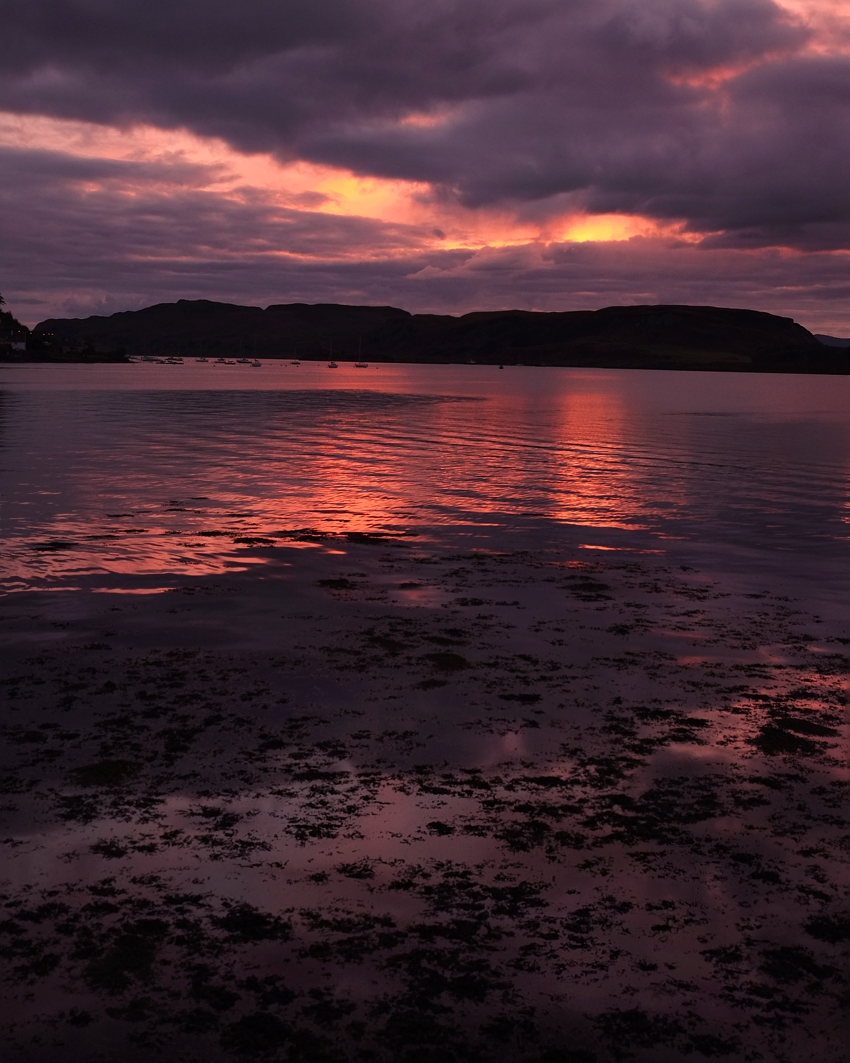 Oban Bay sunset on our Tattie Hols road trip.
Oban Bay sunset on our Tattie Hols road trip.
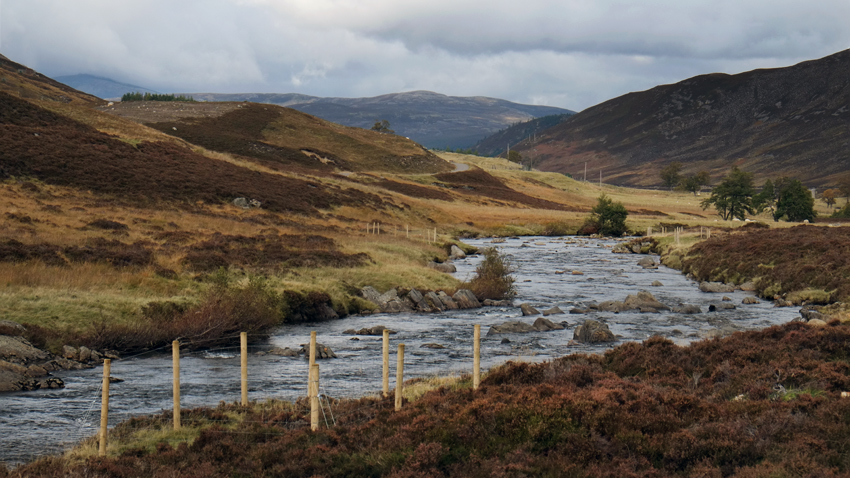 In Scotland the schools have either a one or two week holiday, called The Tattie Hols, so the students can help harvest the potatoes. Not many young people harvest potatoes today, but the holiday remains. I had a one-week holiday and, as we have done the past several years, took a road trip somewhere in Scotland. We headed due west over the Grampian Mountains. This is the upper River Dee.
In Scotland the schools have either a one or two week holiday, called The Tattie Hols, so the students can help harvest the potatoes. Not many young people harvest potatoes today, but the holiday remains. I had a one-week holiday and, as we have done the past several years, took a road trip somewhere in Scotland. We headed due west over the Grampian Mountains. This is the upper River Dee.
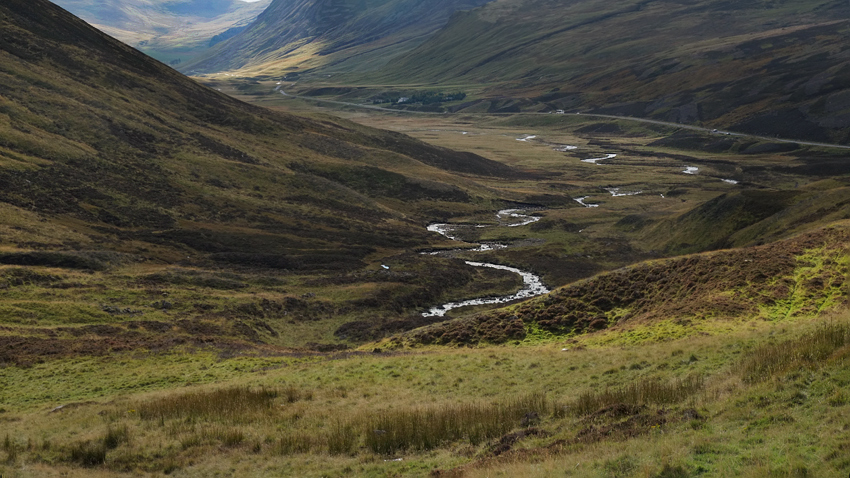 A beautiful glacier-cut valley in the Scottish Highlands.
A beautiful glacier-cut valley in the Scottish Highlands.
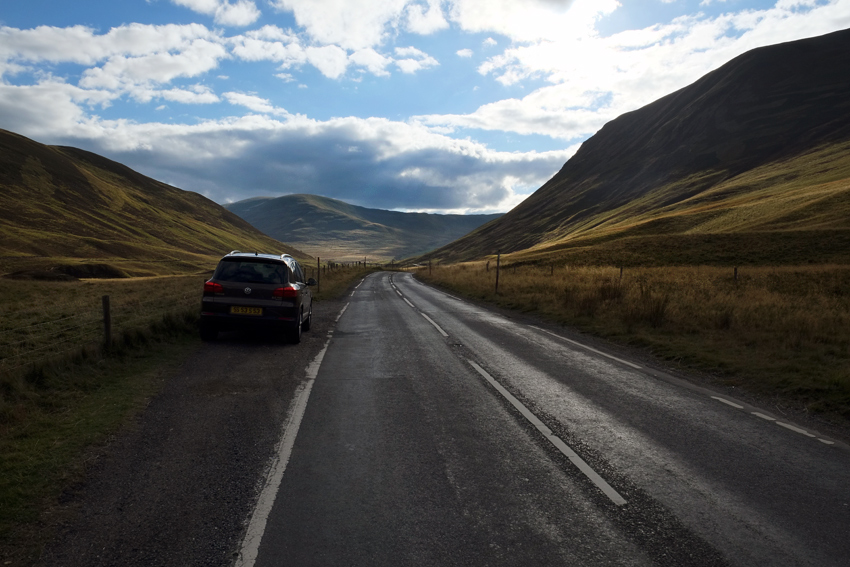 We love our Scottish Highlands road trips.
We love our Scottish Highlands road trips.
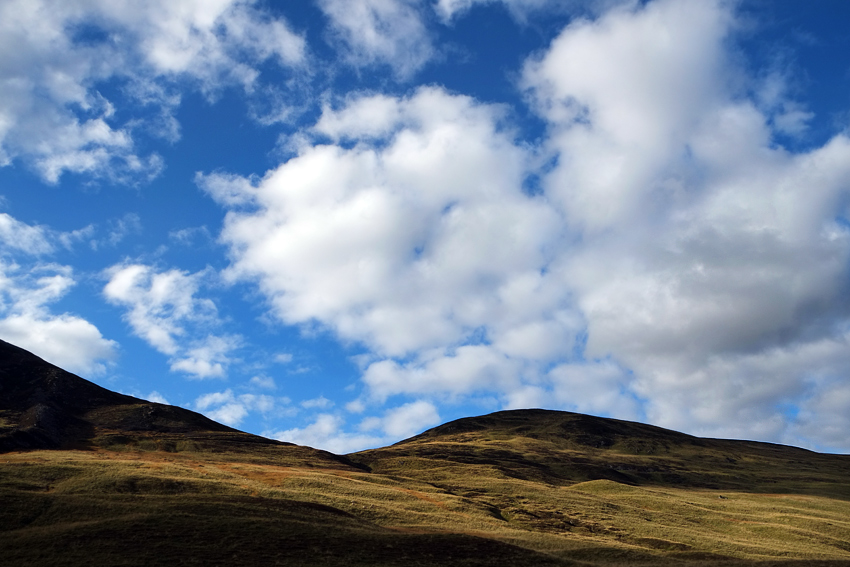 Autumn is our favorite time of the year to be in the Highlands . . . the sky is so magnificent.
Autumn is our favorite time of the year to be in the Highlands . . . the sky is so magnificent.
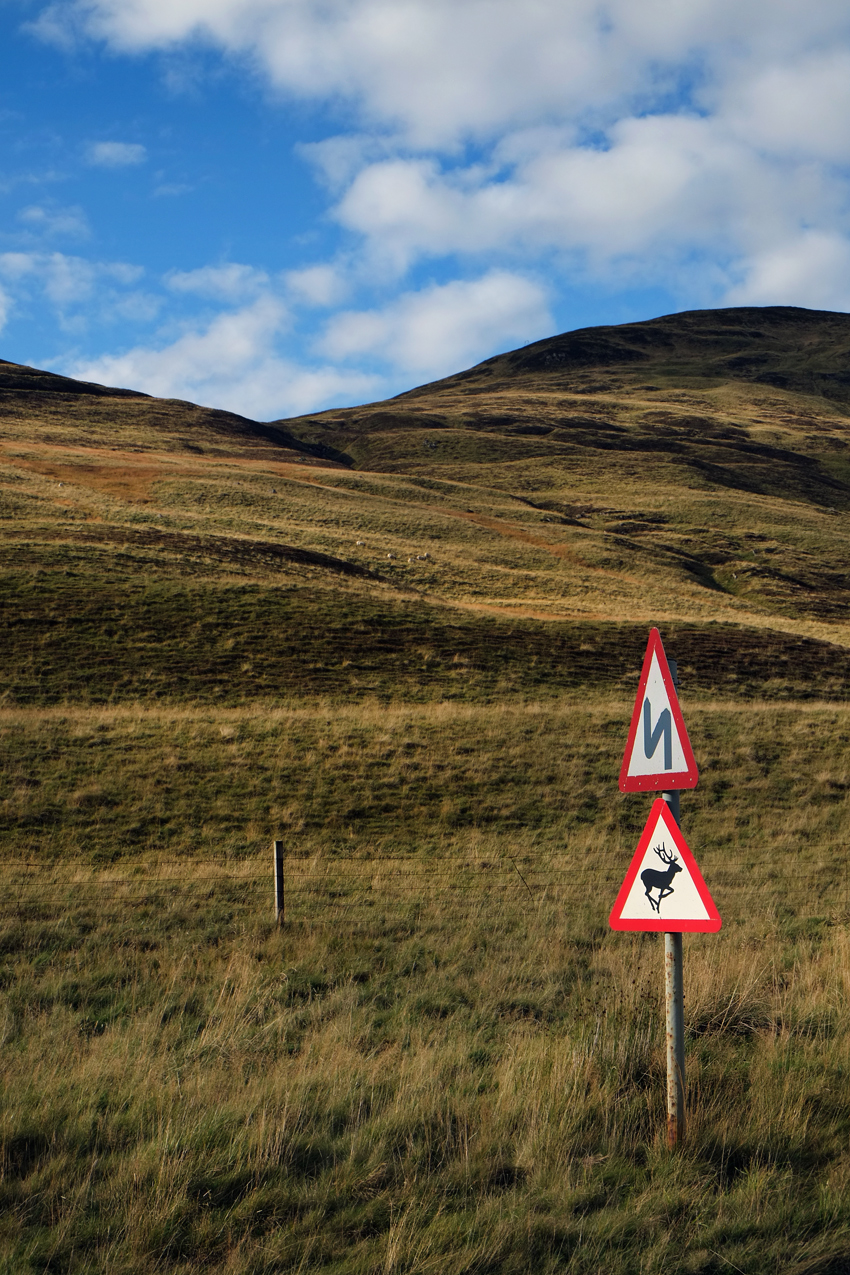 Highlands Fall colour.
Highlands Fall colour.
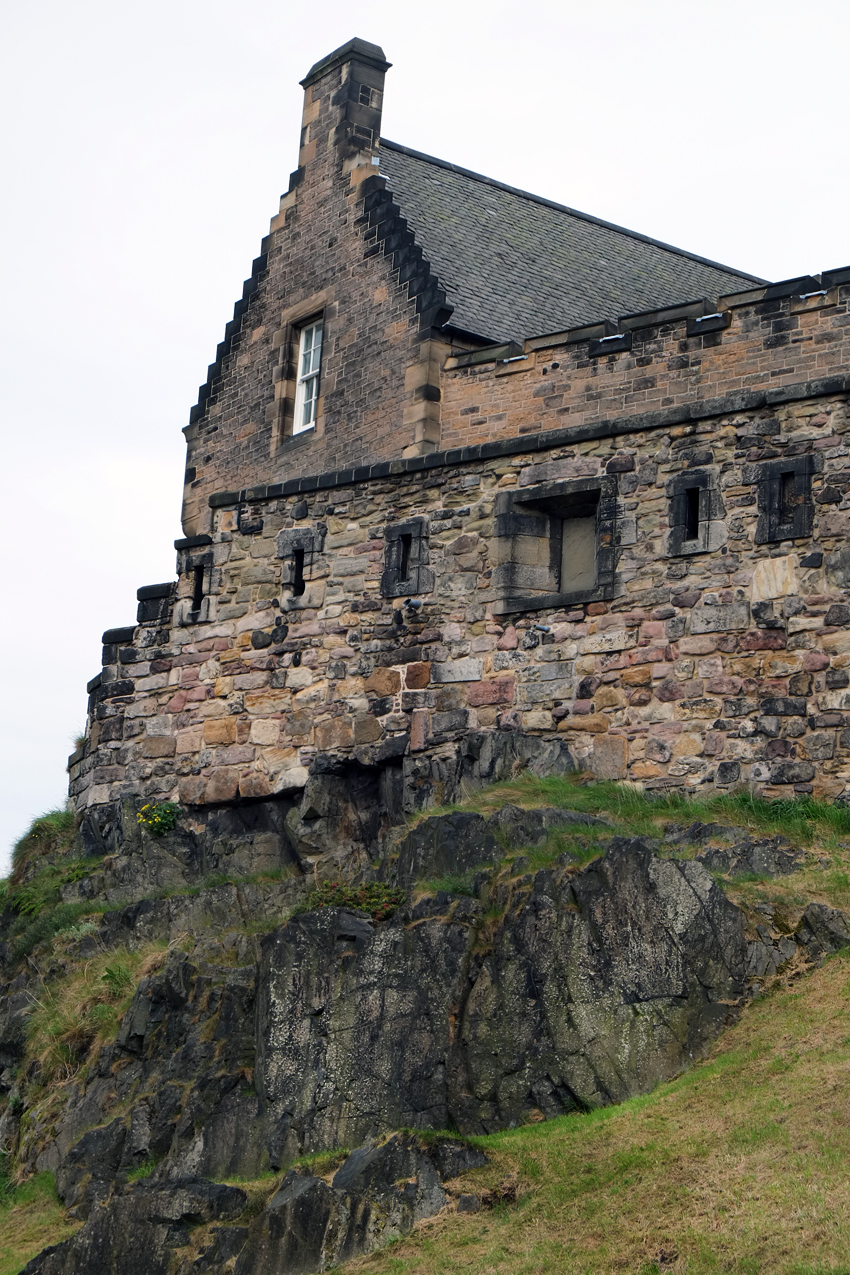 Although there are very few houses in the Highlands, the ones that you do see are stately.
Although there are very few houses in the Highlands, the ones that you do see are stately.
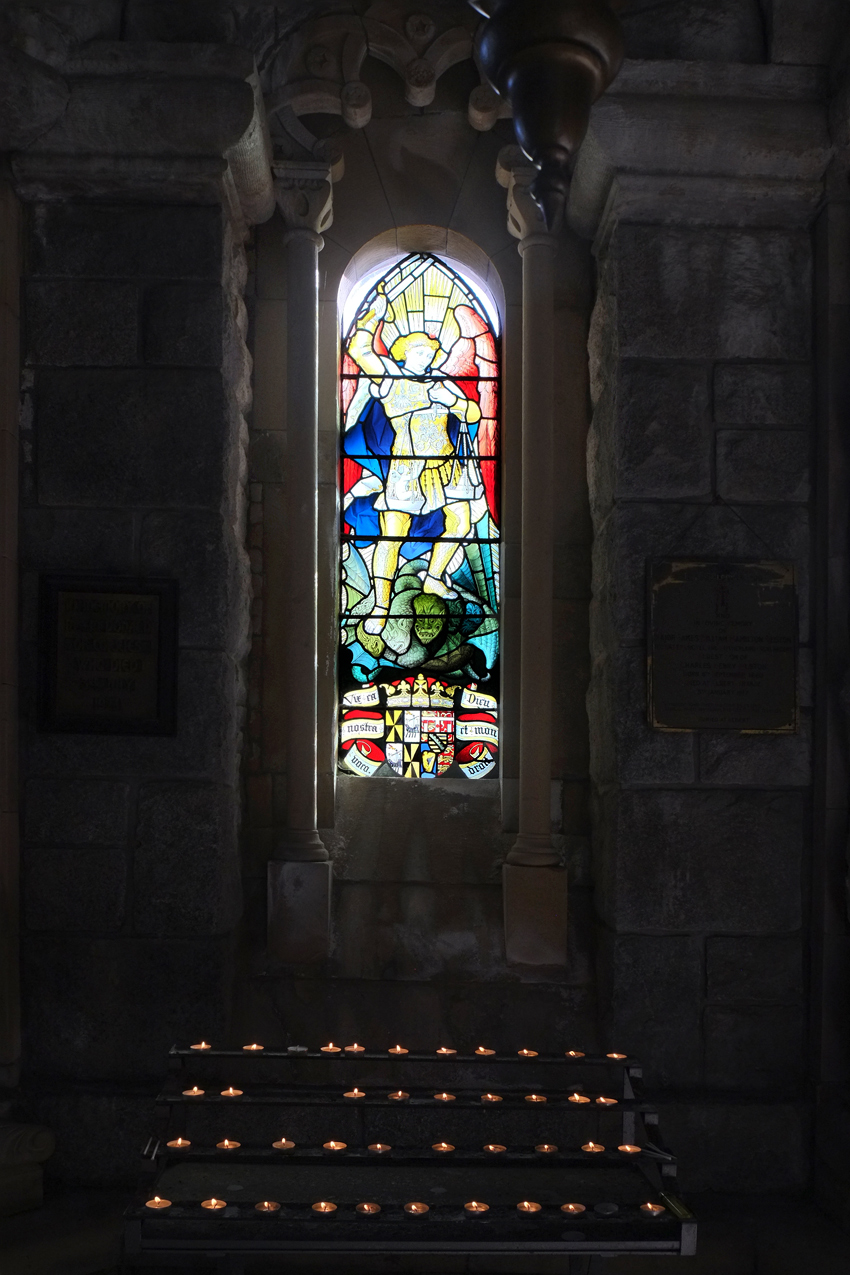 Our route skirted the Grampian Highlands along Loch Awe where we discovered the amazing St. Conan's Kirke.
Our route skirted the Grampian Highlands along Loch Awe where we discovered the amazing St. Conan's Kirke.
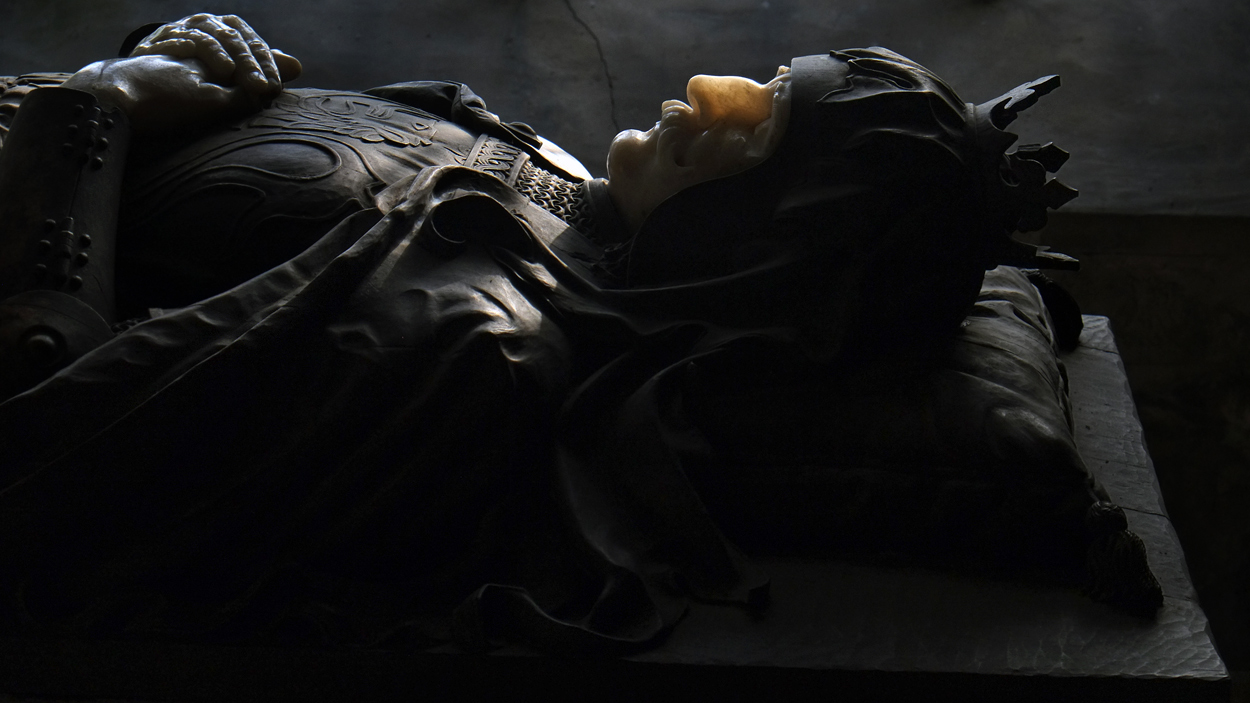 It is rumored that a bone fragment of Robert the Bruce, King of Scotland 1306-1329, is buried here . . . but the LIGHT!
It is rumored that a bone fragment of Robert the Bruce, King of Scotland 1306-1329, is buried here . . . but the LIGHT!
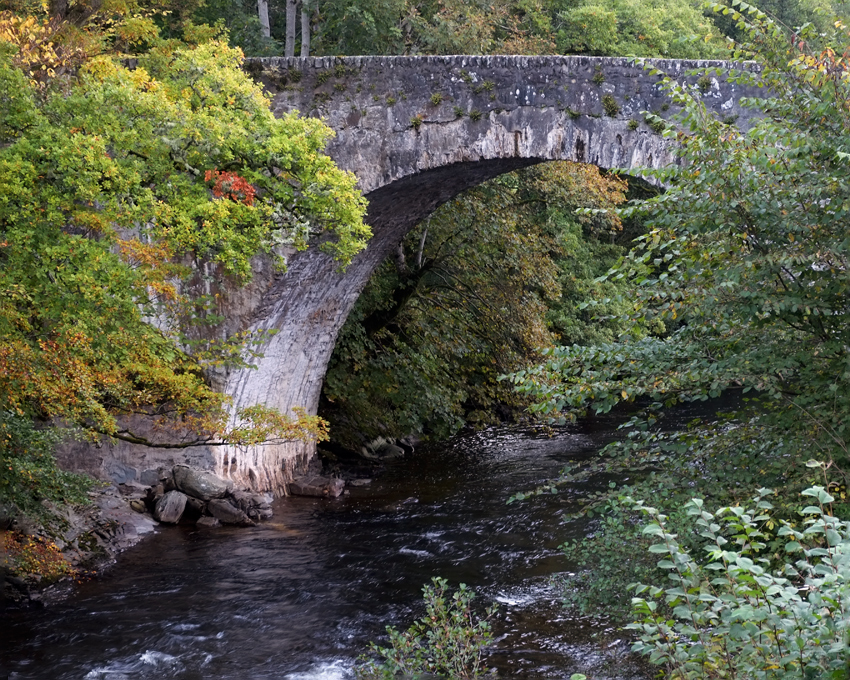 So much to see. After a couple of days through the Highlands, we arrived at the Bridge of Lochay, near Killin.
So much to see. After a couple of days through the Highlands, we arrived at the Bridge of Lochay, near Killin.
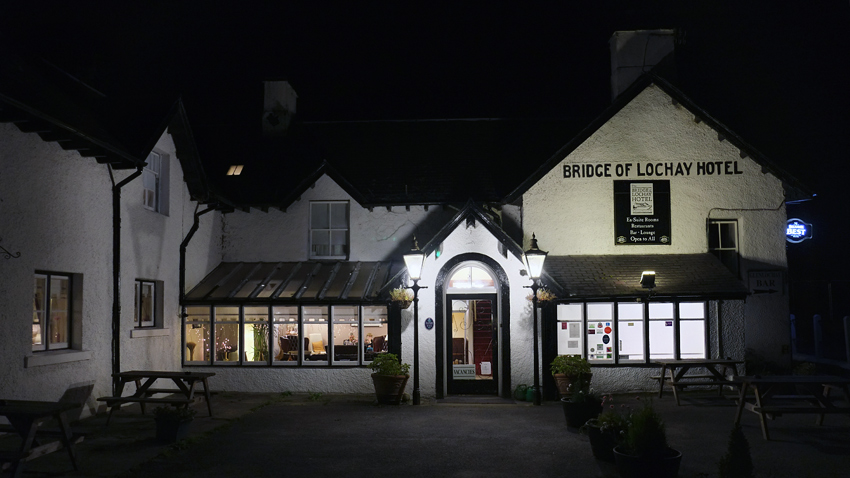 We stayed the night in the old world Bridge of Lochay Hotel.
We stayed the night in the old world Bridge of Lochay Hotel.
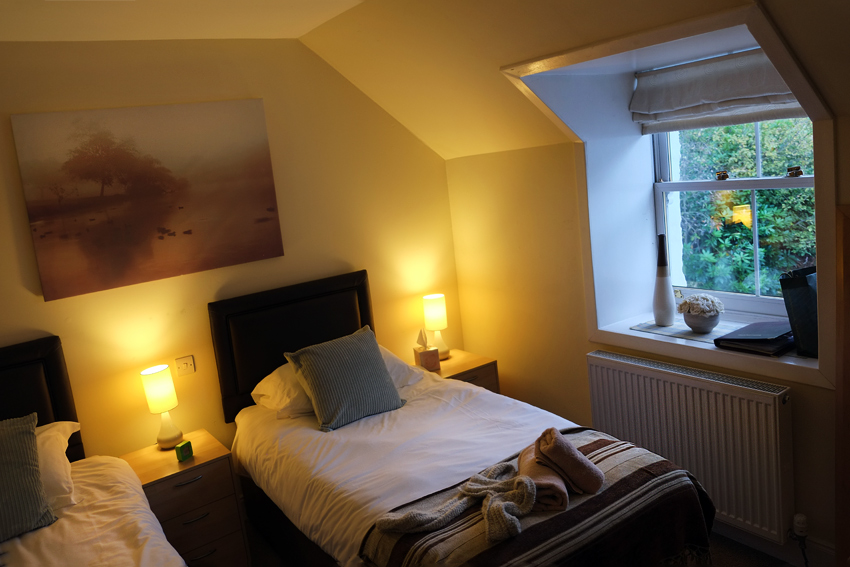 The interior of the Bridge of Lochay Hotel had recently been tastefully renovated.
The interior of the Bridge of Lochay Hotel had recently been tastefully renovated.
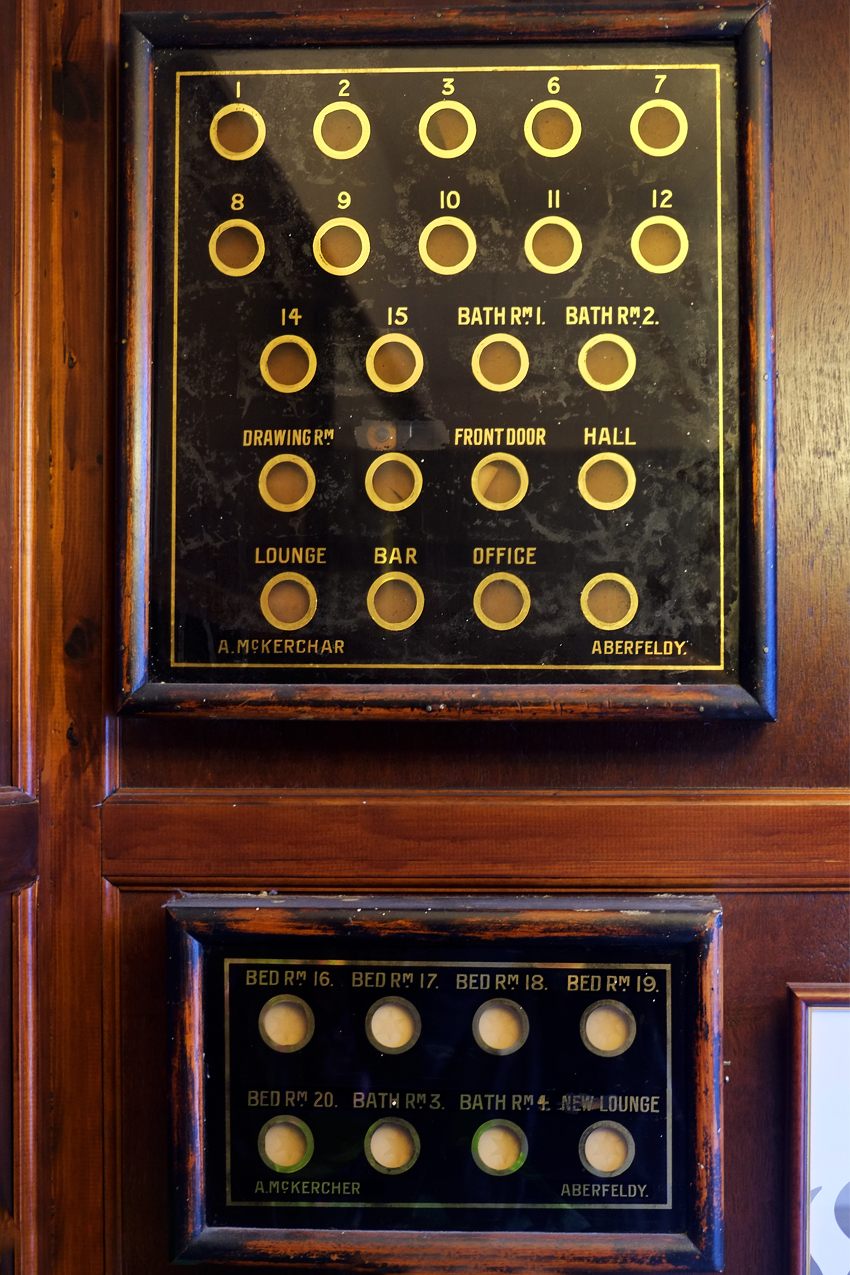 The Bridge of Lochay Hotel had a wonderful old intercom system that must have come when rural electrification arrived.
The Bridge of Lochay Hotel had a wonderful old intercom system that must have come when rural electrification arrived.
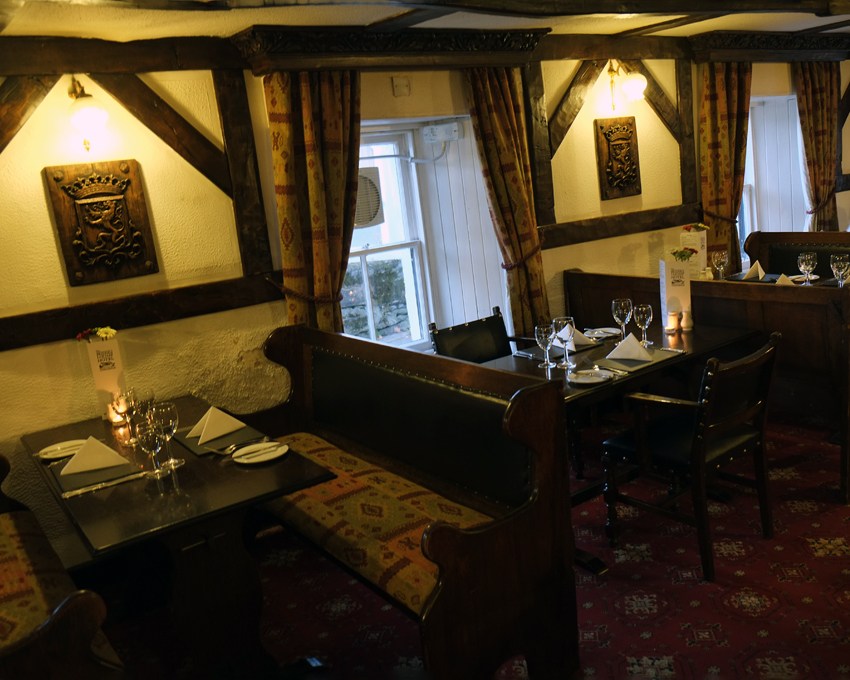 The hotel dining room was quaint . . .
The hotel dining room was quaint . . .
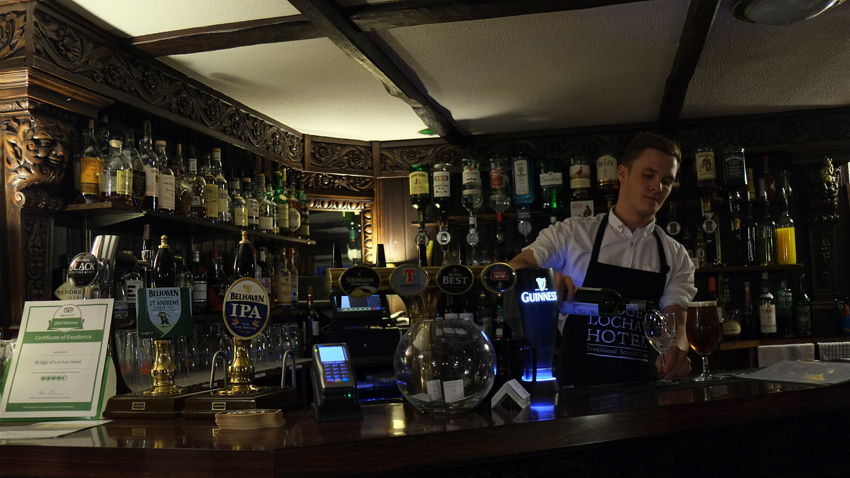 . . . and the barman friendly and skilled.
. . . and the barman friendly and skilled.
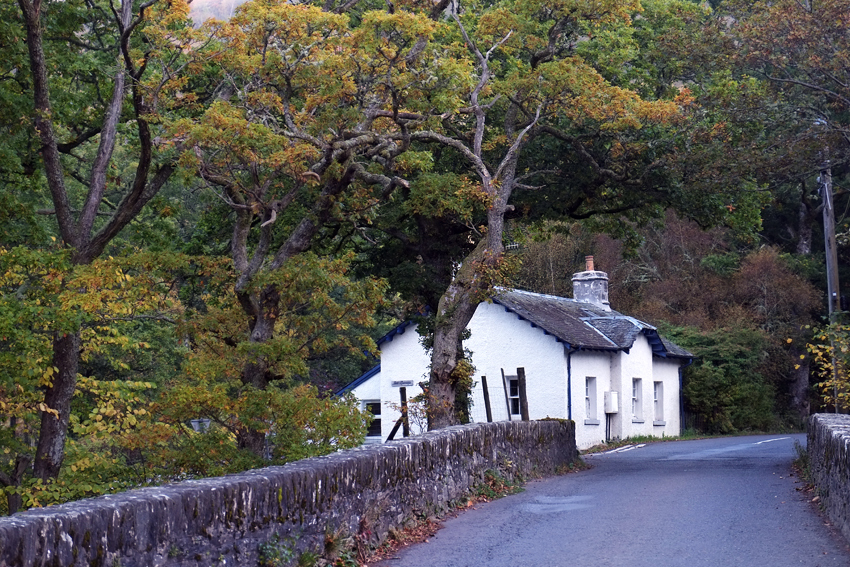 I took an early morning walk across the bridge next to the hotel.
I took an early morning walk across the bridge next to the hotel.
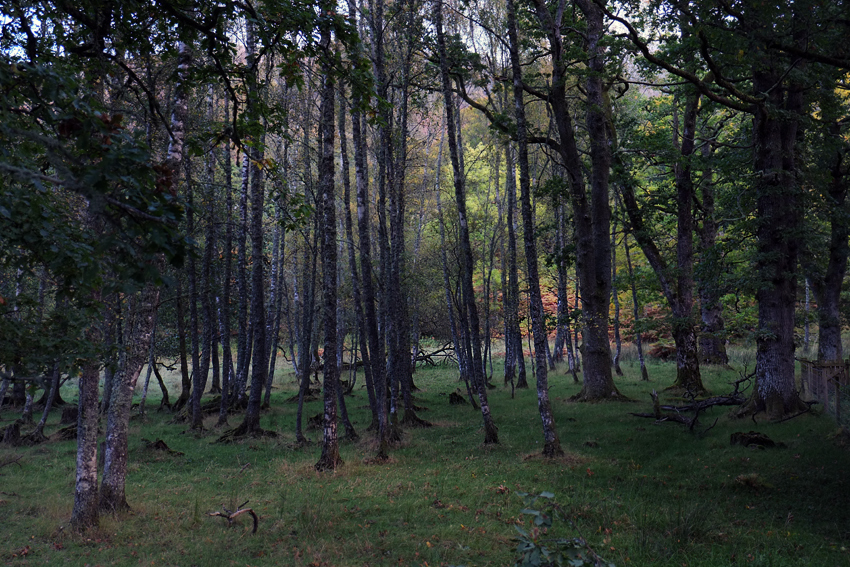 A thin light filtered through the trees.
A thin light filtered through the trees.
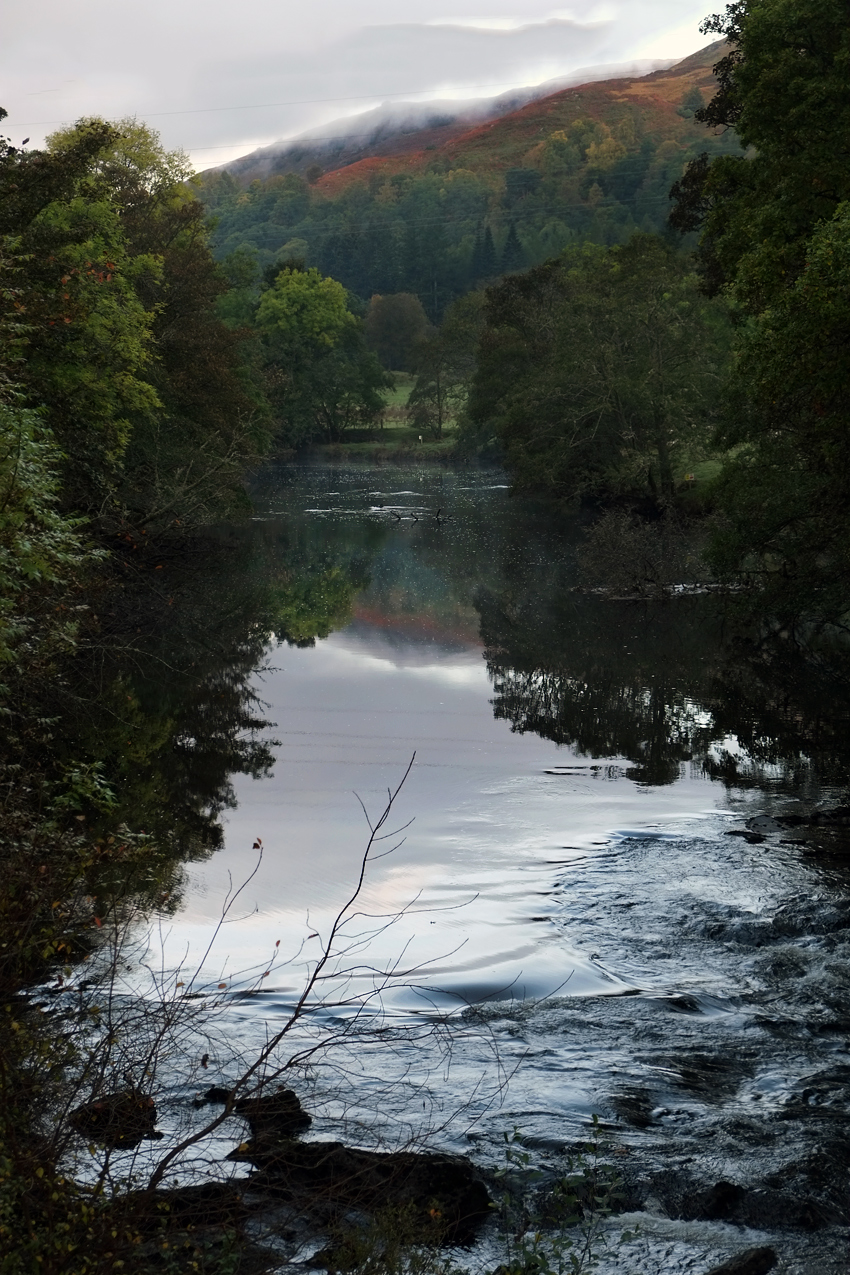 Early morning along the River Lochay.
Early morning along the River Lochay.
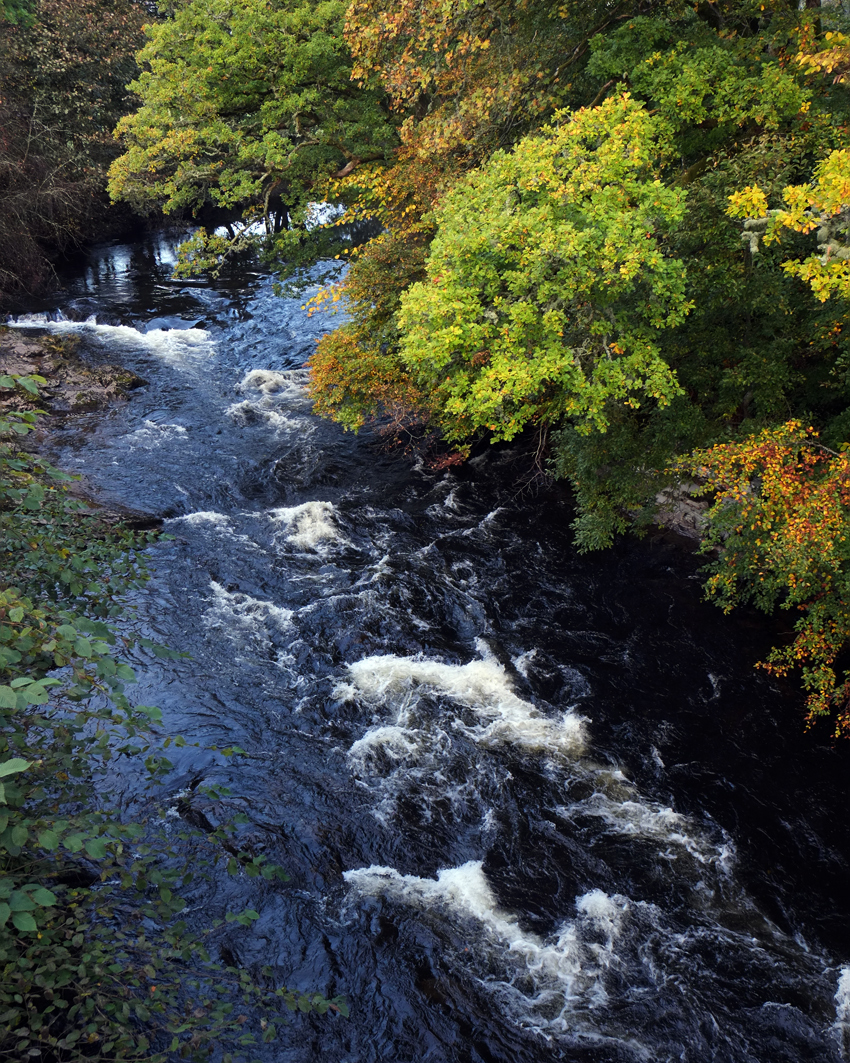 The River Lochay quickened as it fell under the bridge toward Loch Tay.
The River Lochay quickened as it fell under the bridge toward Loch Tay.
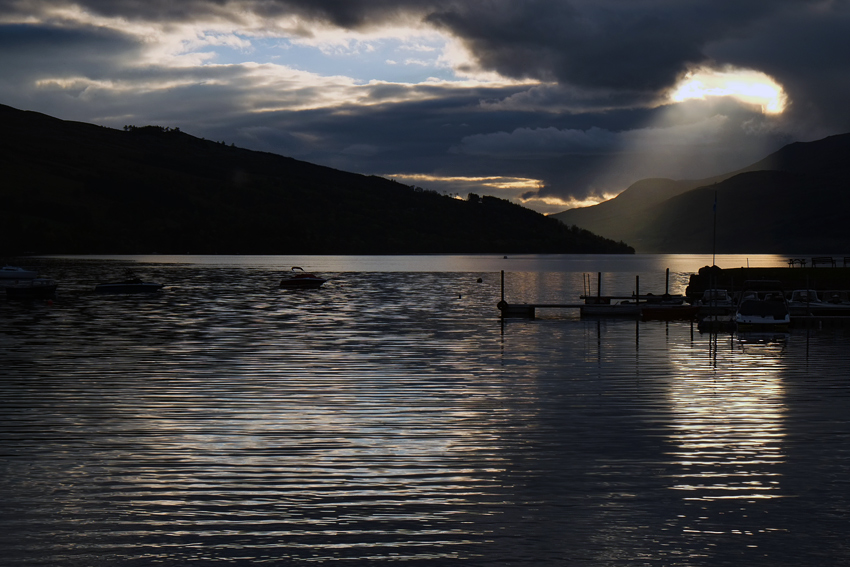 As we rounded a bend in the road coming into Kenmore at the foot of Loch Tay we were stunned with this otherworldly sunset.
As we rounded a bend in the road coming into Kenmore at the foot of Loch Tay we were stunned with this otherworldly sunset.
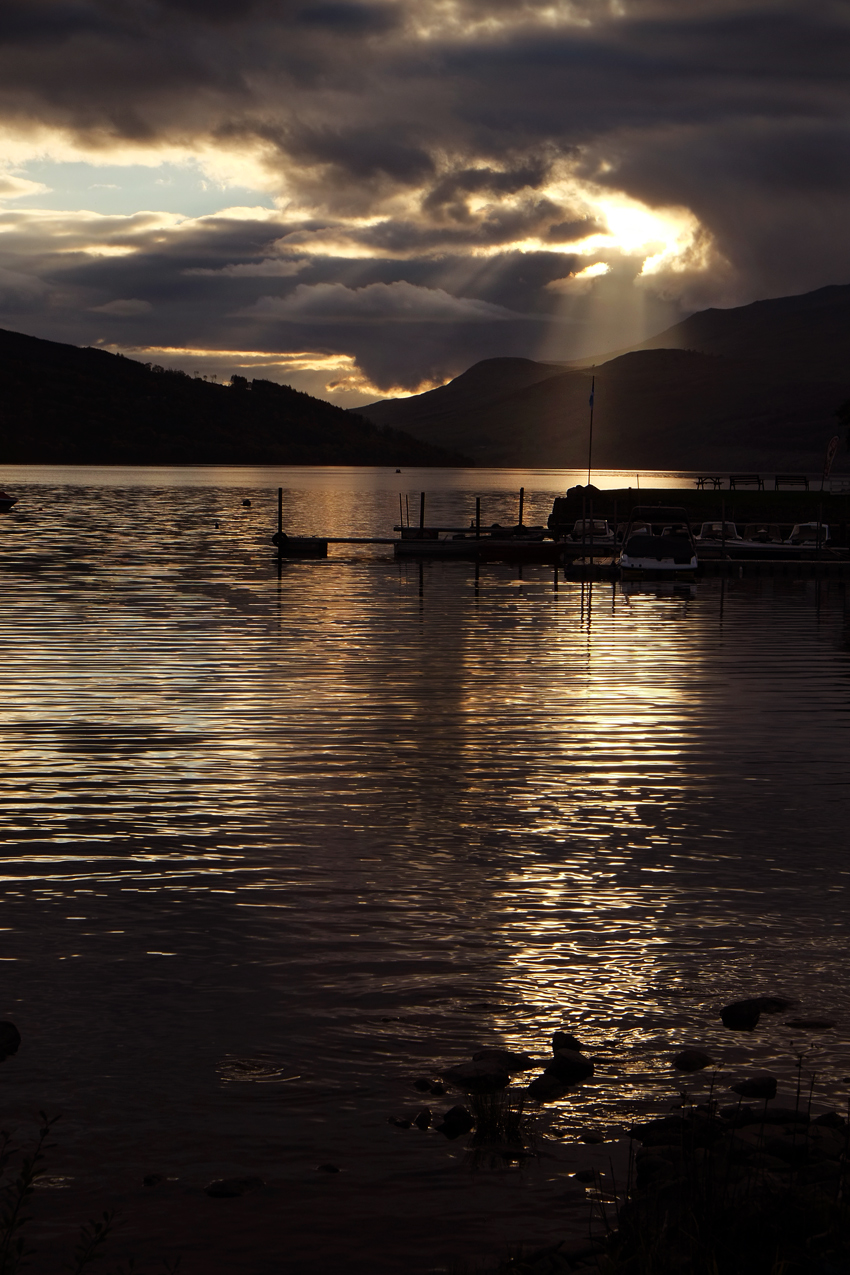 We stayed long enough with our mouths agape in wonder for the sunset to become golden.
We stayed long enough with our mouths agape in wonder for the sunset to become golden.
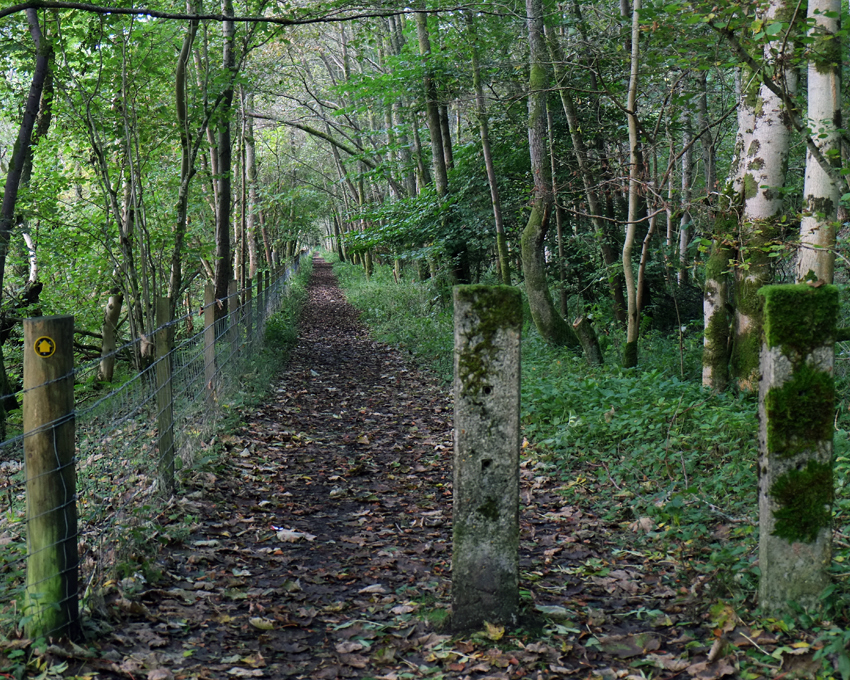 On another morning near Loch Awe, we set off on a wooded trail. There are many, many well-marked trails all over Scotland.
On another morning near Loch Awe, we set off on a wooded trail. There are many, many well-marked trails all over Scotland.
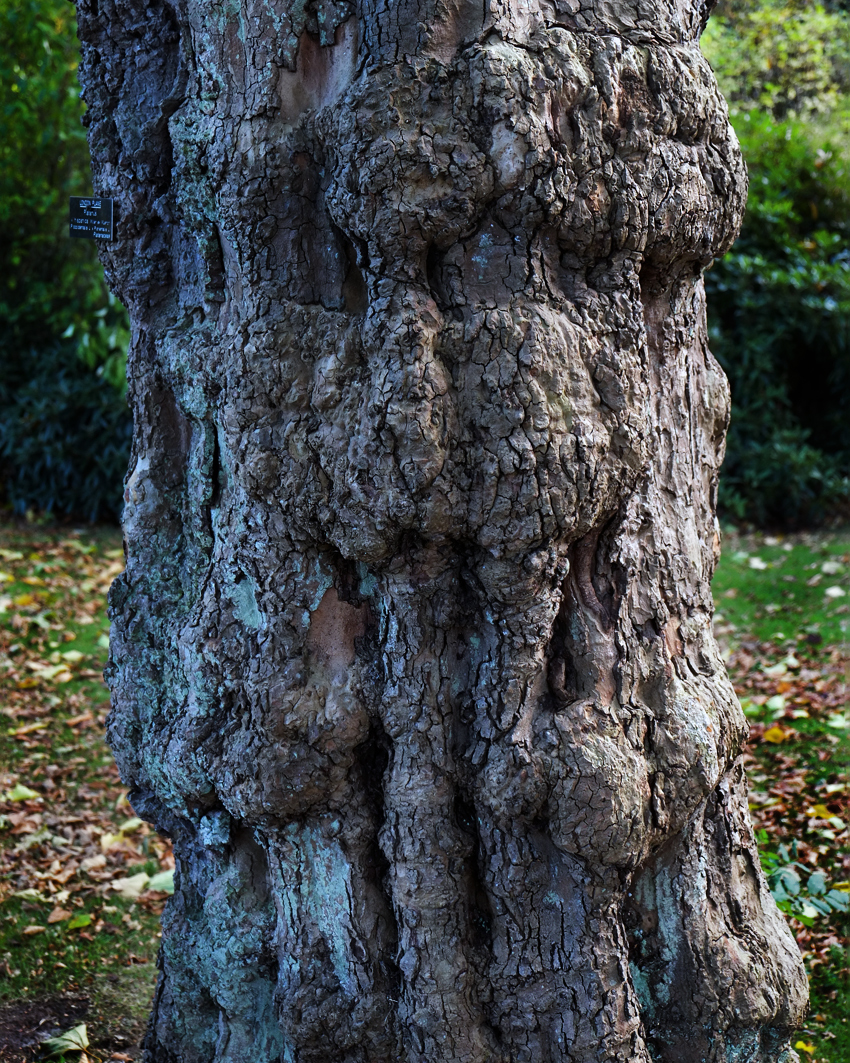 Tree. Forest walk.
Tree. Forest walk.
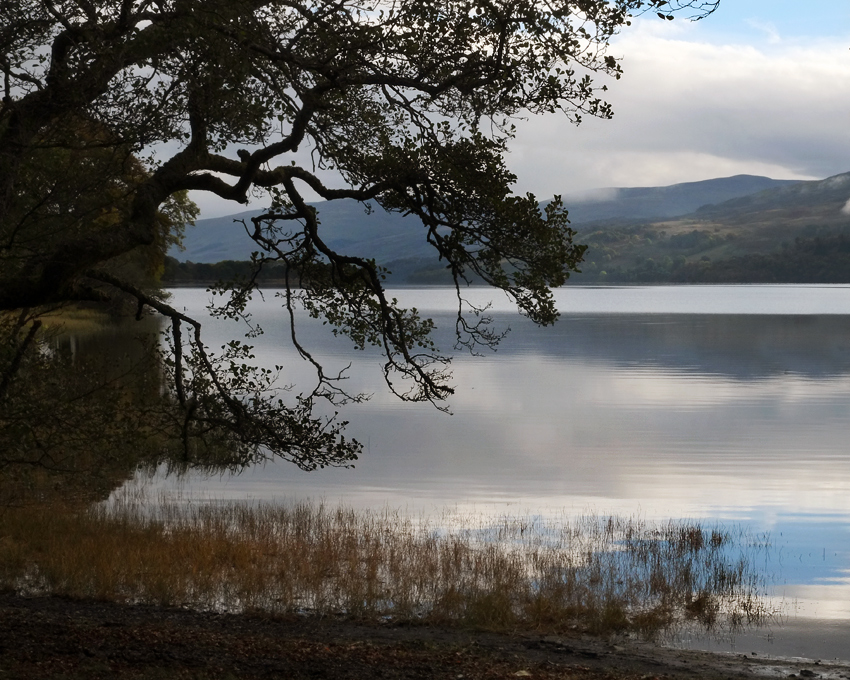 Our trail brought us along the shore of the loch.
Our trail brought us along the shore of the loch.
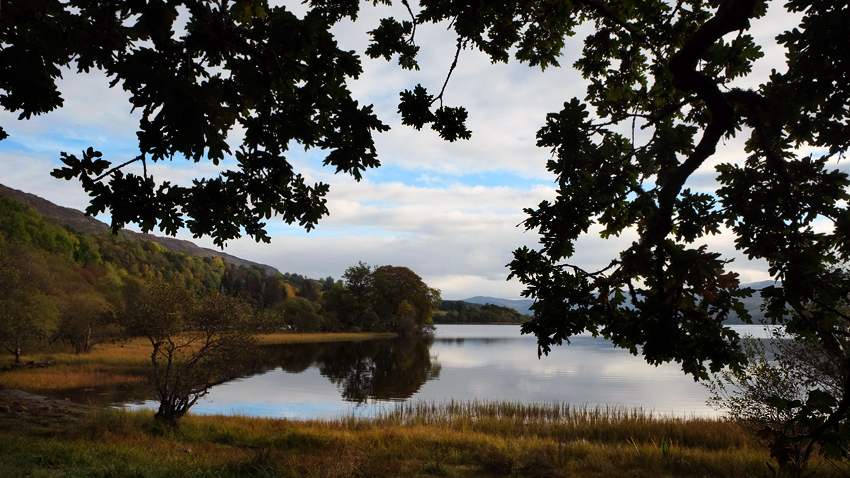 Such beautiful scenery in Scotland.
Such beautiful scenery in Scotland.
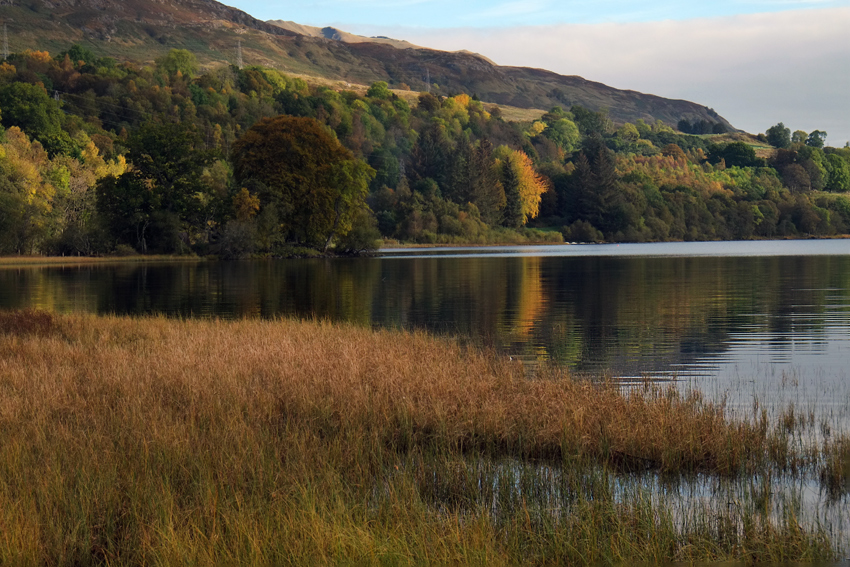 Scenery to inspire a landscape artist.
Scenery to inspire a landscape artist.
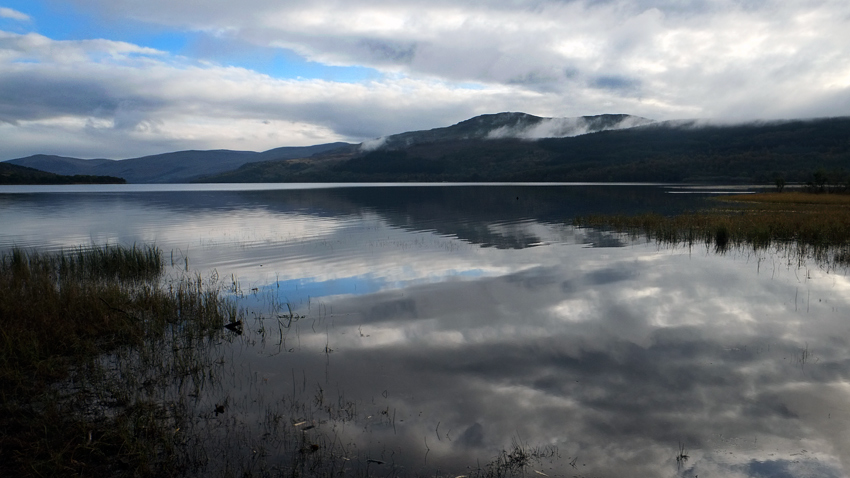 The sky and light ever-changing . . . .
The sky and light ever-changing . . . .
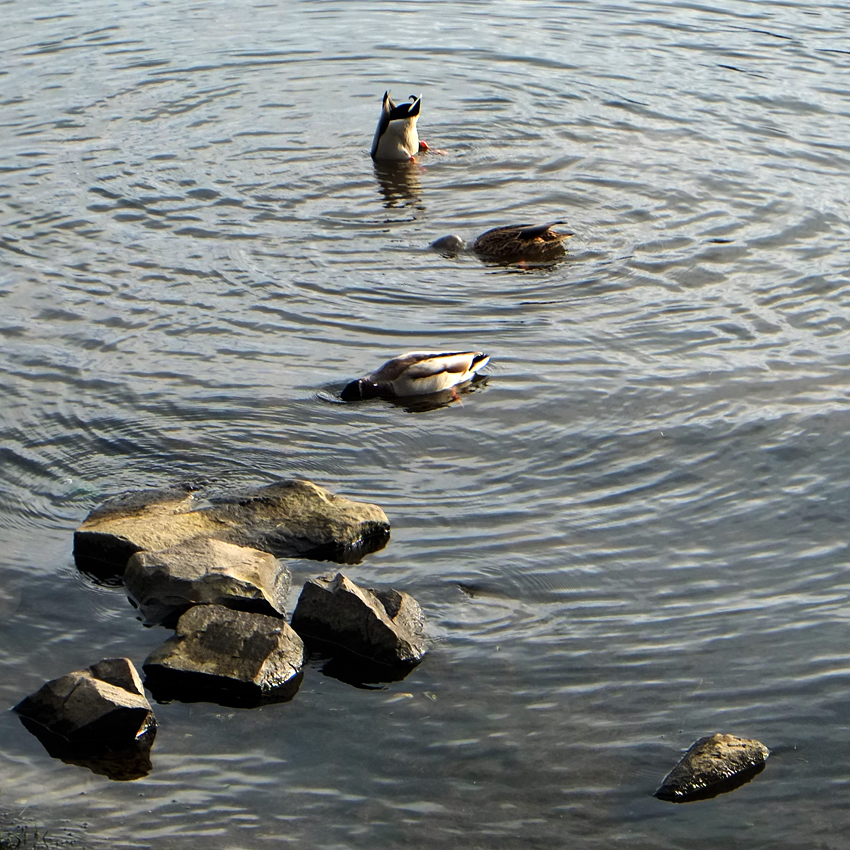 Migrating ducks were happy to dive for fish in the shallows.
Migrating ducks were happy to dive for fish in the shallows.
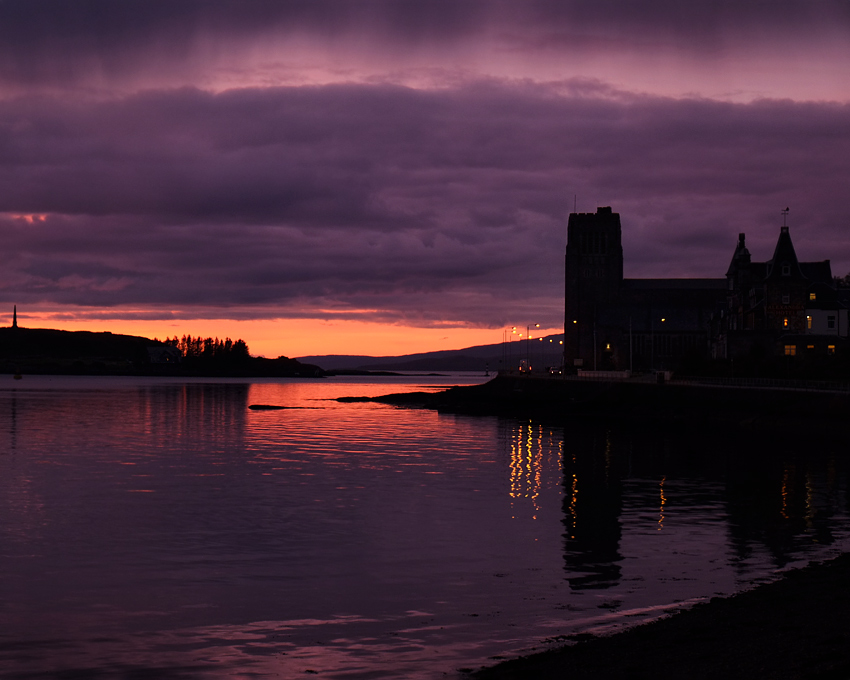 We crossed Scotland to the west coast and the town of Oban for another fantastic sunset. My wife loves oysters, and Oban has the best oysters in the world, she says.
We crossed Scotland to the west coast and the town of Oban for another fantastic sunset. My wife loves oysters, and Oban has the best oysters in the world, she says.
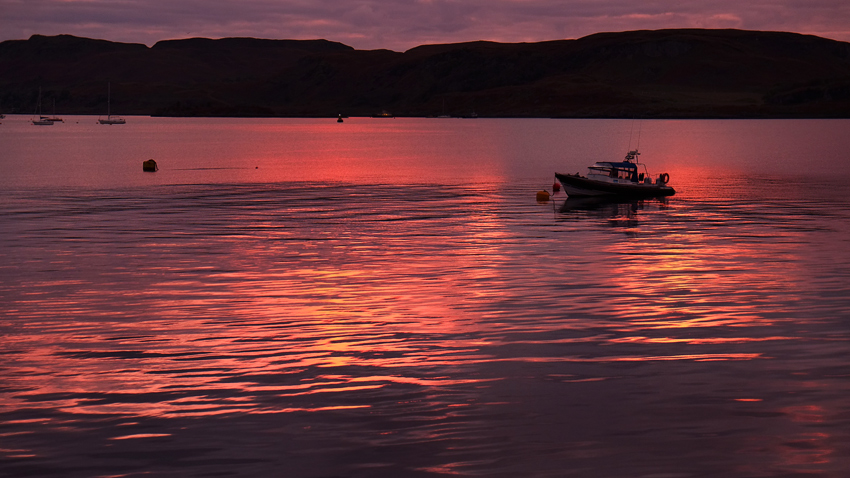 We strolled along the Oban Esplanade during a stunning sunset one evening.
We strolled along the Oban Esplanade during a stunning sunset one evening.
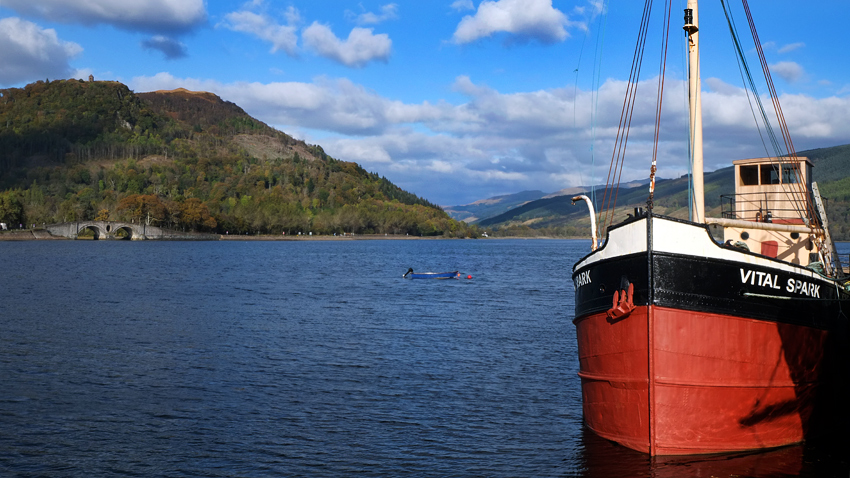 I had a wonderful amber ale with my seafood dinner in Oban, so we decided to see if we could find the brewery. Loch Fyne, and the Fyne Ales, were only a few hours away. We drove there and bought four cases of Jarl before heading on . . .
I had a wonderful amber ale with my seafood dinner in Oban, so we decided to see if we could find the brewery. Loch Fyne, and the Fyne Ales, were only a few hours away. We drove there and bought four cases of Jarl before heading on . . .
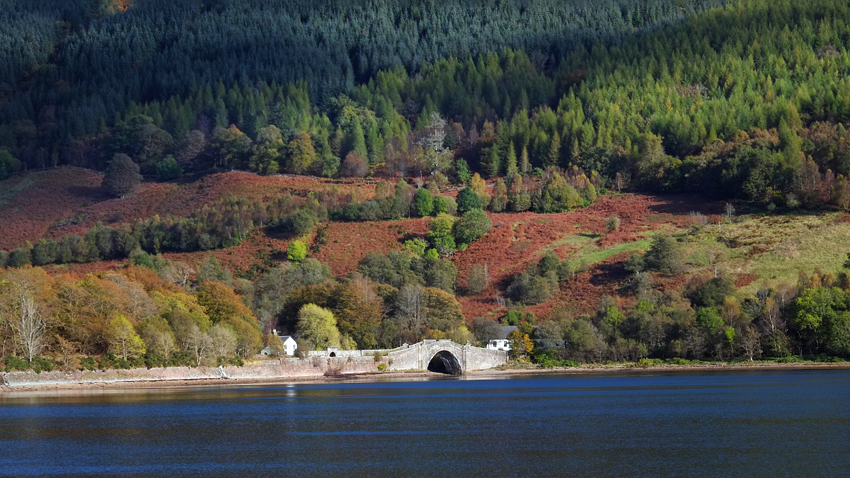 The bridge at the upper end of Loch Fyne.
The bridge at the upper end of Loch Fyne.
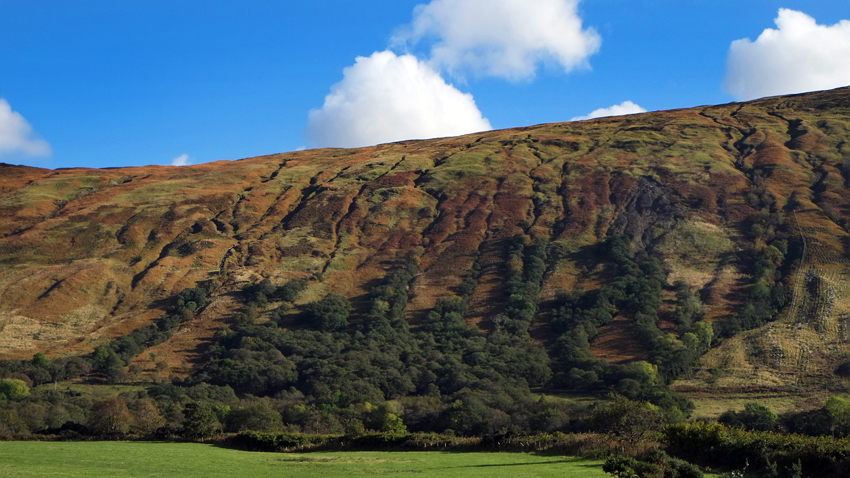 The autumn hills across Loch Fyne. We had great oysters near here too.
The autumn hills across Loch Fyne. We had great oysters near here too.
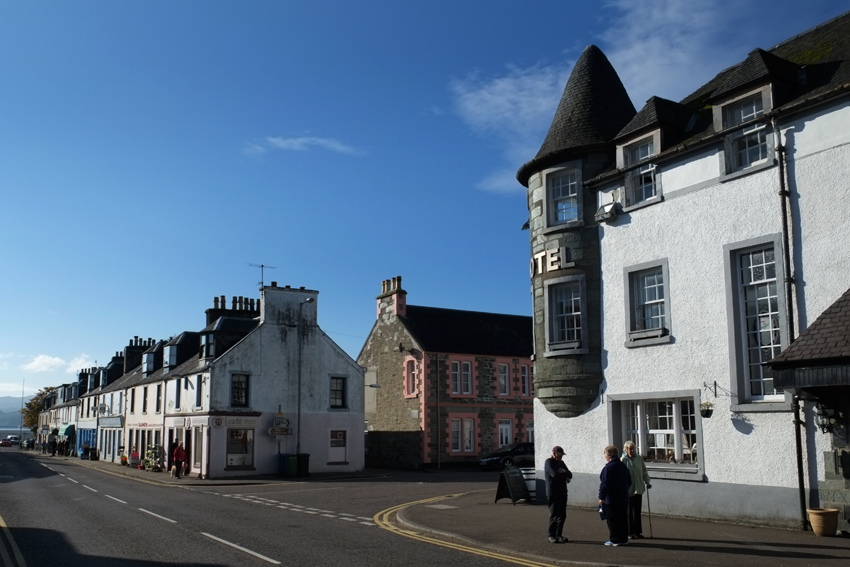 Based on a restaurant tip, we headed down to Argylll from Oban . . . to find a brewery . . . and this sweet village.
Based on a restaurant tip, we headed down to Argylll from Oban . . . to find a brewery . . . and this sweet village.
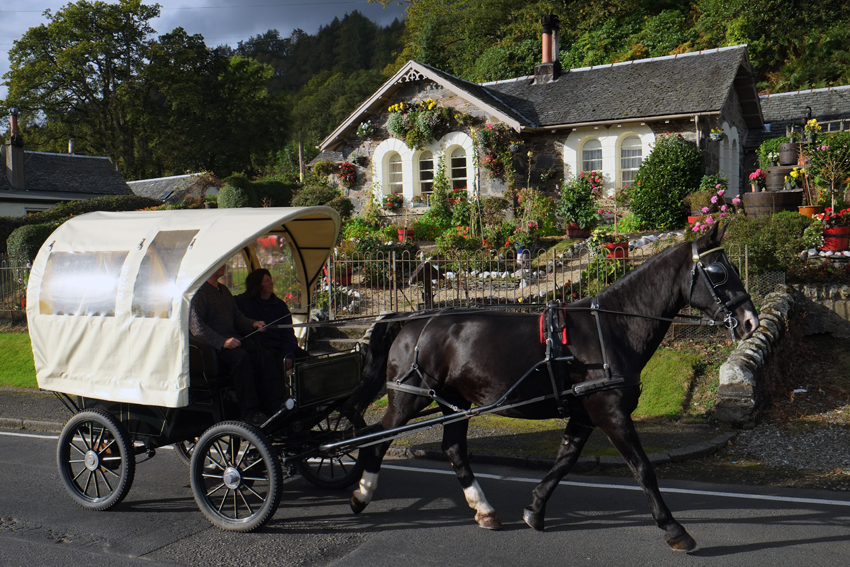 Our return route took us along Loch Lomond where we stayed overnight near the house-proud village of Aldochlay, before driving on to Glasgow.
Our return route took us along Loch Lomond where we stayed overnight near the house-proud village of Aldochlay, before driving on to Glasgow.
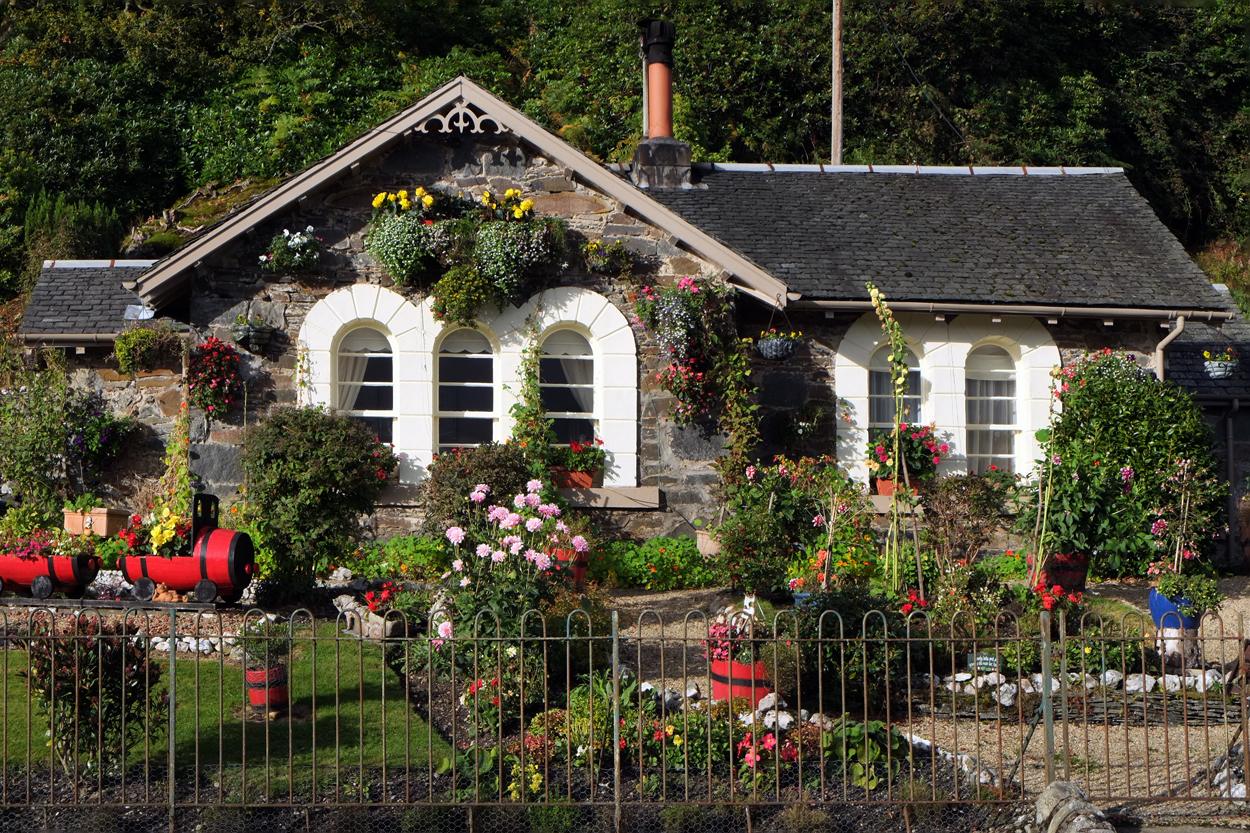 I can't resist another photo of this lovely cottage and garden on Loch Lomond.
I can't resist another photo of this lovely cottage and garden on Loch Lomond.
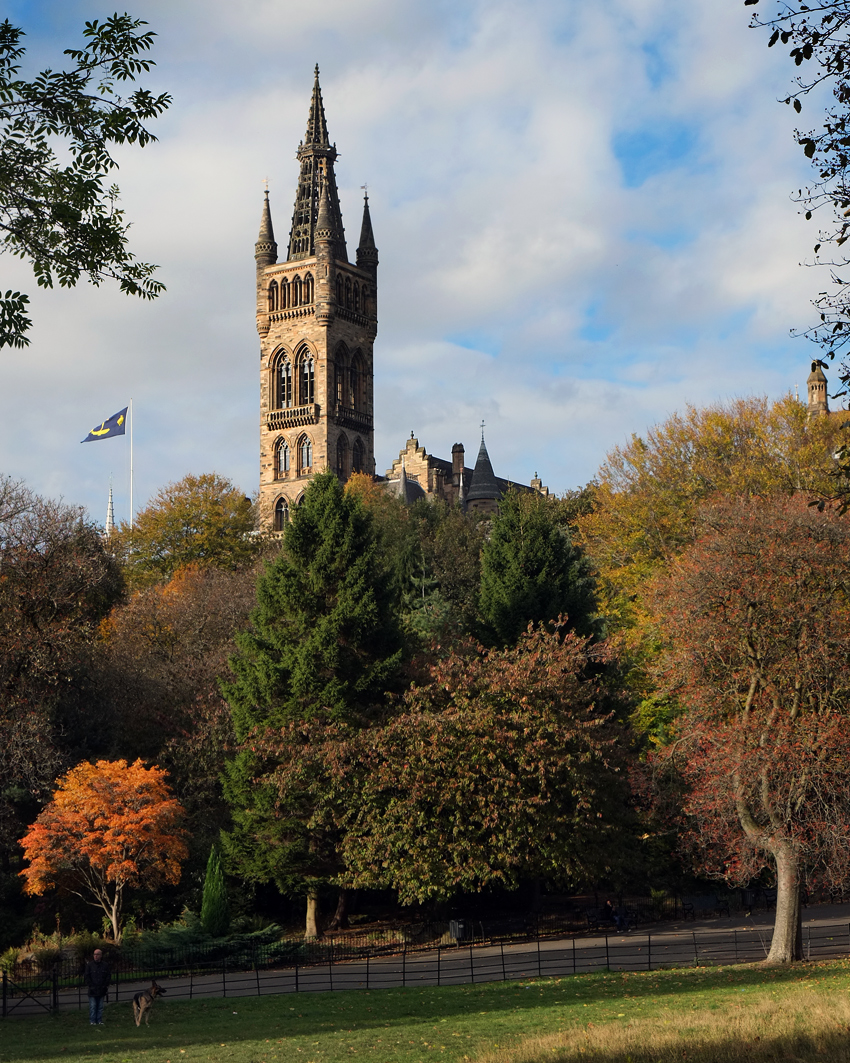 We stayed in Glasgow a few days before driving home to Aberdeen. We love Glasgow, a city of 2.5 million souls.
We stayed in Glasgow a few days before driving home to Aberdeen. We love Glasgow, a city of 2.5 million souls.
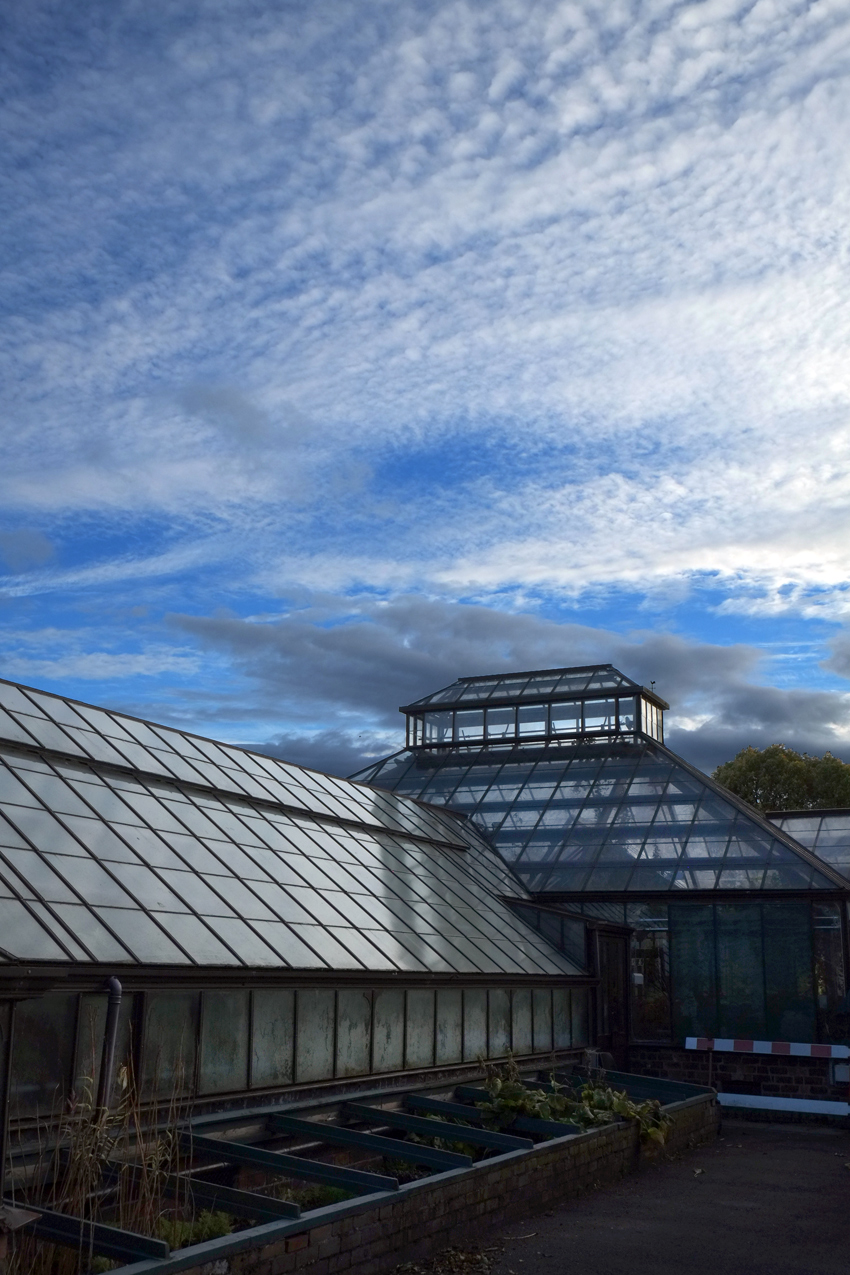 We like walking around Glasgow. There are many parks, but our favorite is the Glasgow Botanic Garden.
We like walking around Glasgow. There are many parks, but our favorite is the Glasgow Botanic Garden.
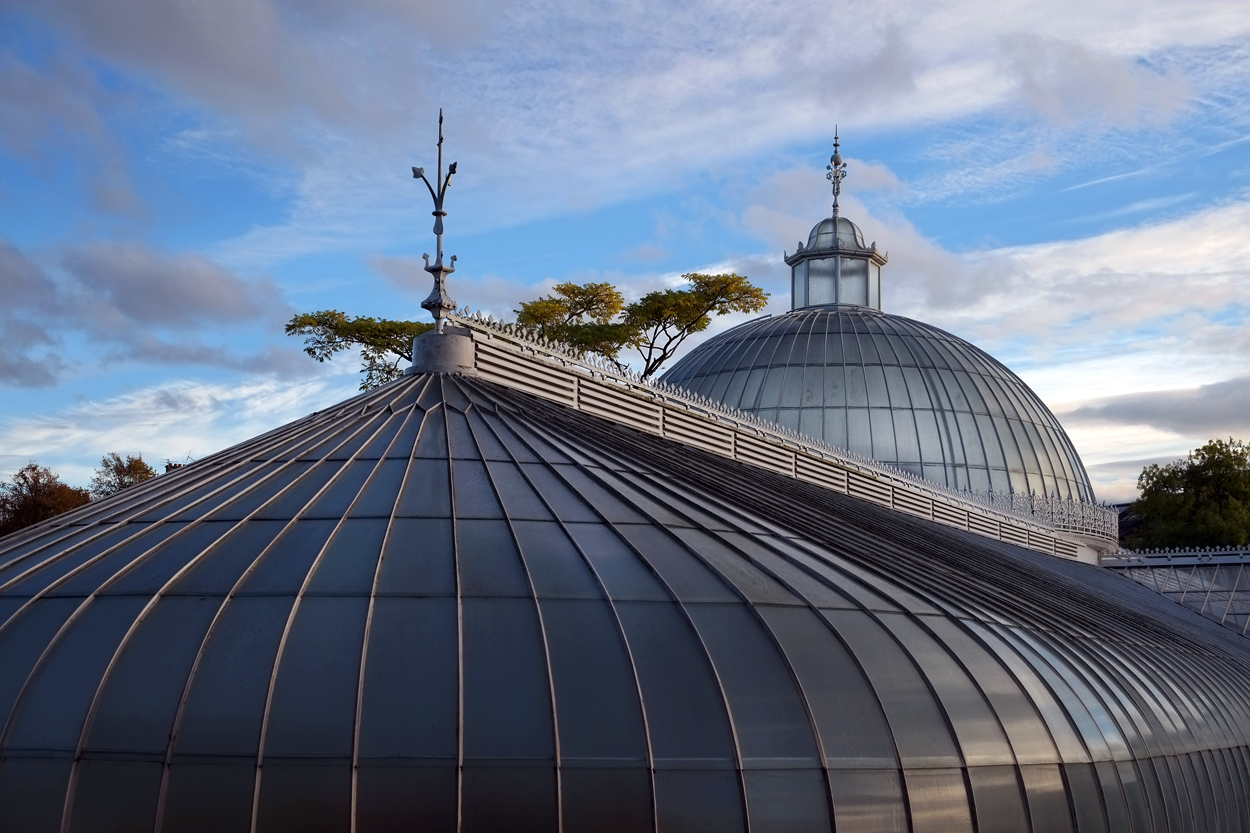 The greenhouses are fantastic.
The greenhouses are fantastic.
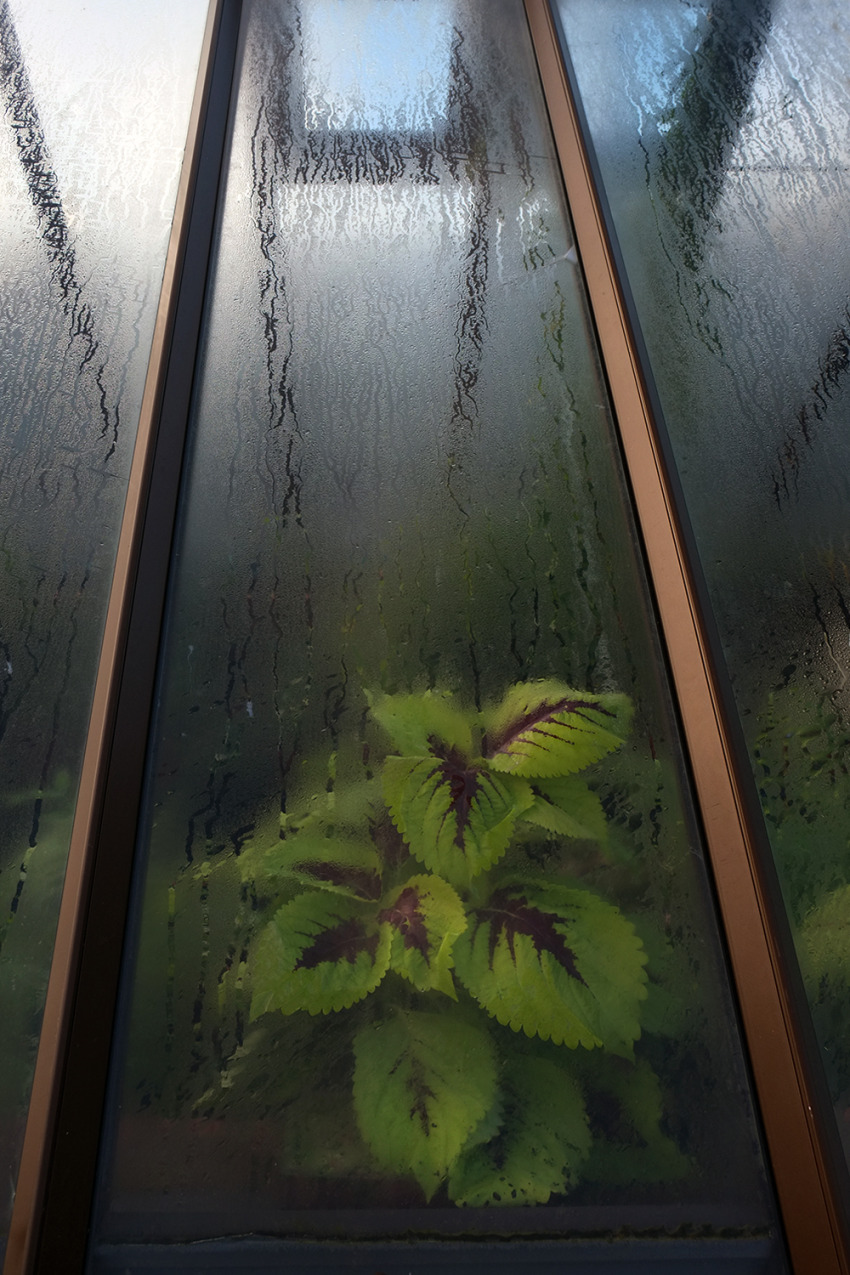 It's nice to visit the tropical houses . . . we miss the tropical plants and heat of Bangkok sometimes.
It's nice to visit the tropical houses . . . we miss the tropical plants and heat of Bangkok sometimes.
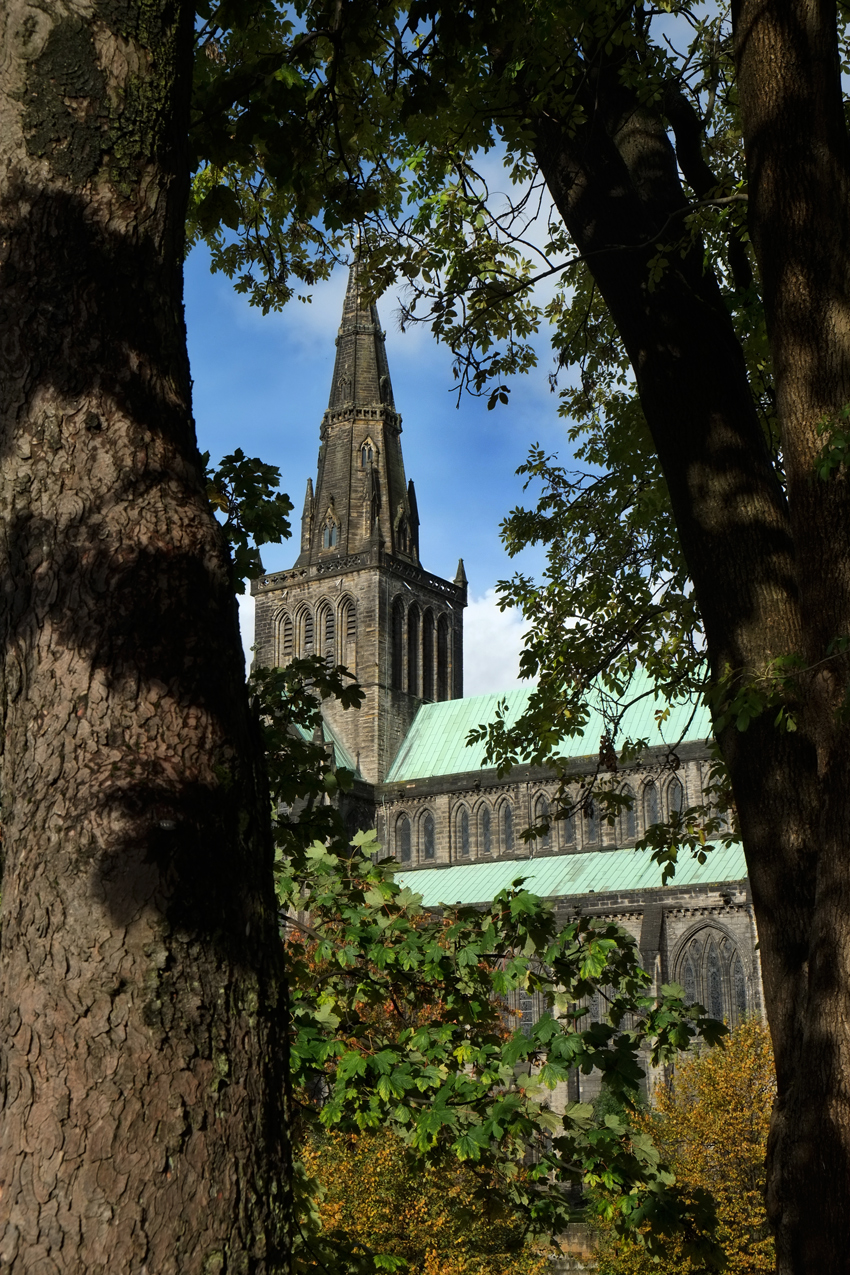 The 12th century Glasgow Cathedral is certainly worth a visit. "It is also one of the few Scottish medieval churches (and the only medieval cathedral on the Scottish mainland) to have survived the Reformation not unroofed."
The 12th century Glasgow Cathedral is certainly worth a visit. "It is also one of the few Scottish medieval churches (and the only medieval cathedral on the Scottish mainland) to have survived the Reformation not unroofed."
 It goes without saying that the interior of Glasgow Cathedral is a phantasmagoria of images, light and shadow.
It goes without saying that the interior of Glasgow Cathedral is a phantasmagoria of images, light and shadow.
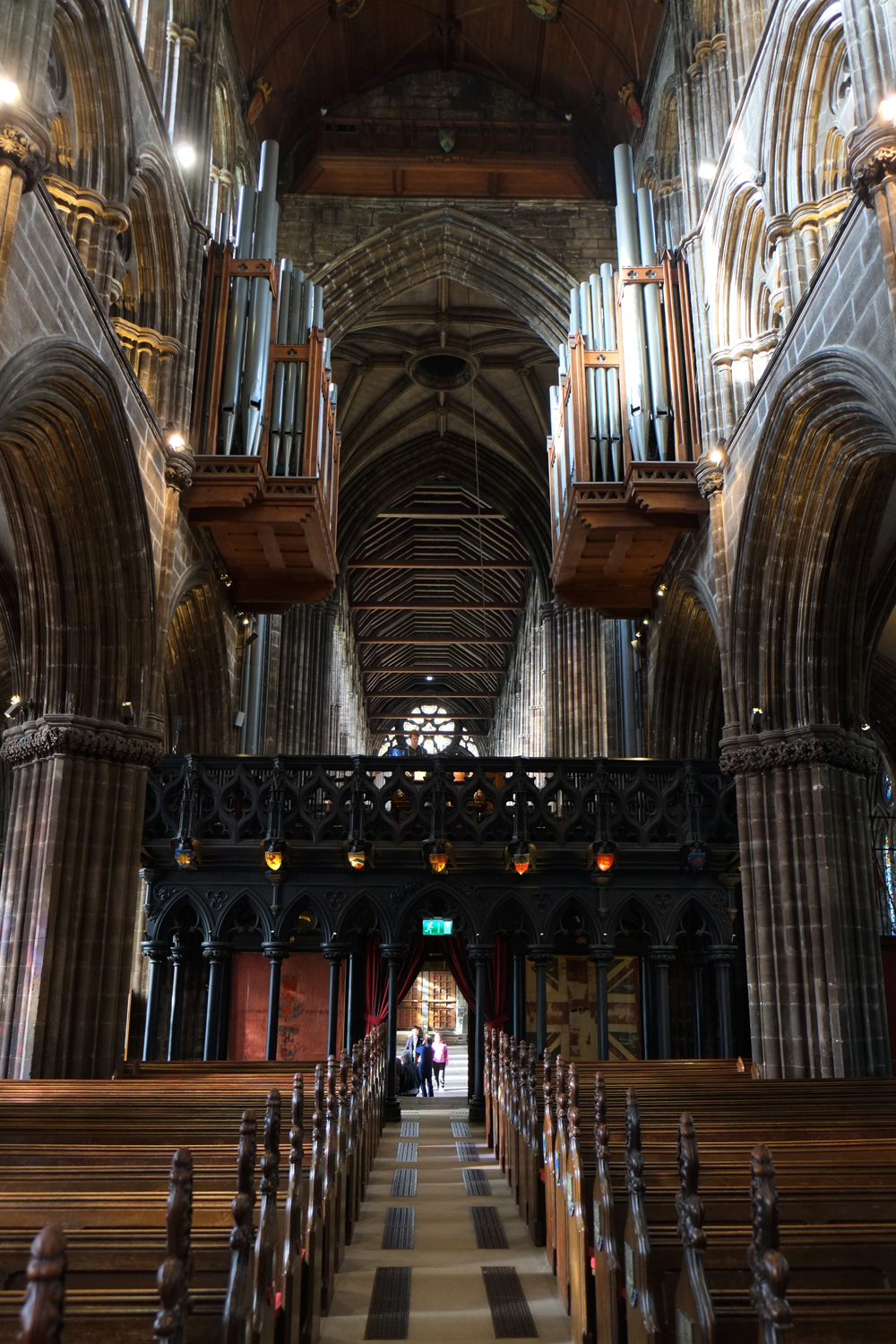 The pipe organ of Glasgow Cathedral.
The pipe organ of Glasgow Cathedral.
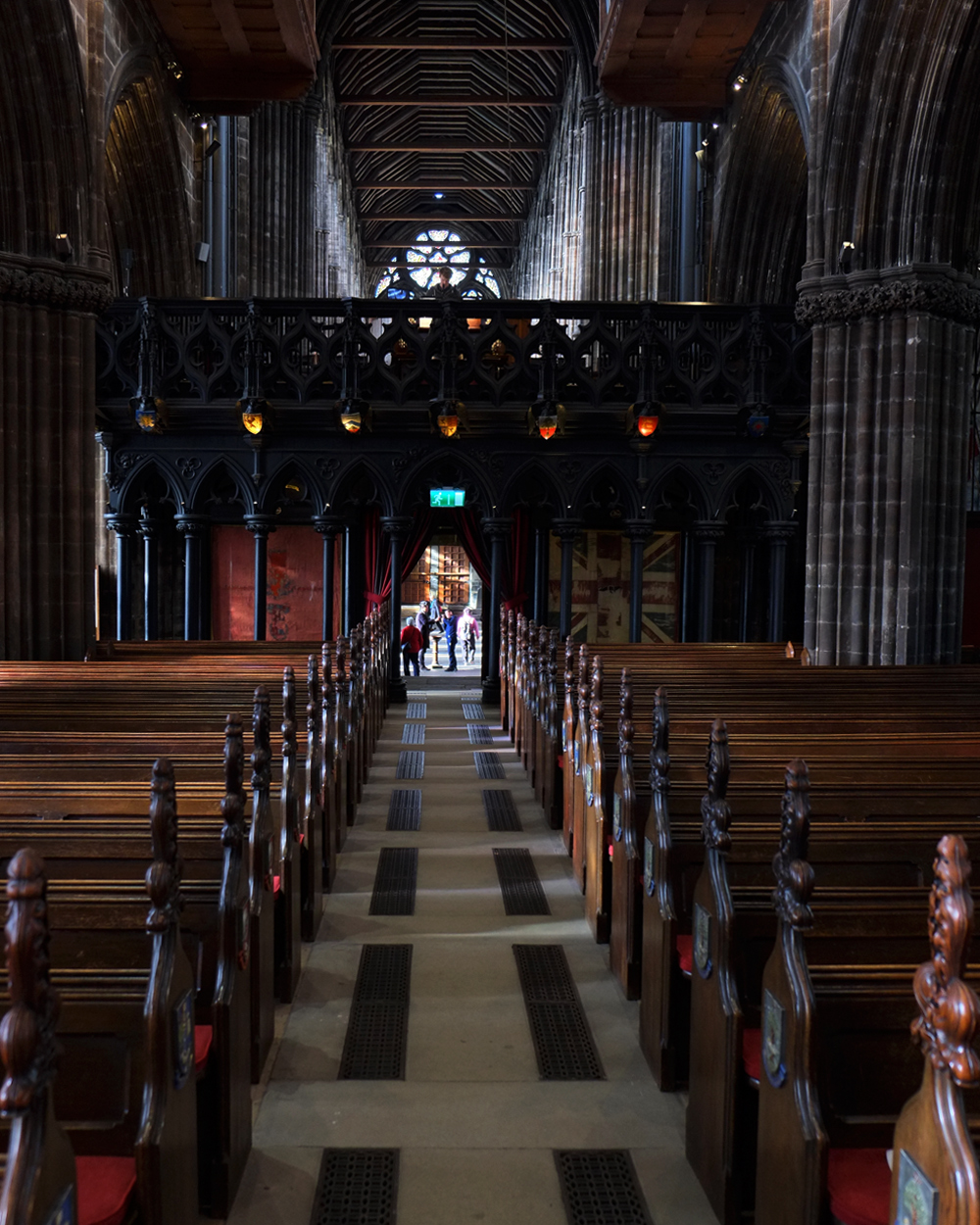 I could have stayed all day in this old space.
I could have stayed all day in this old space.
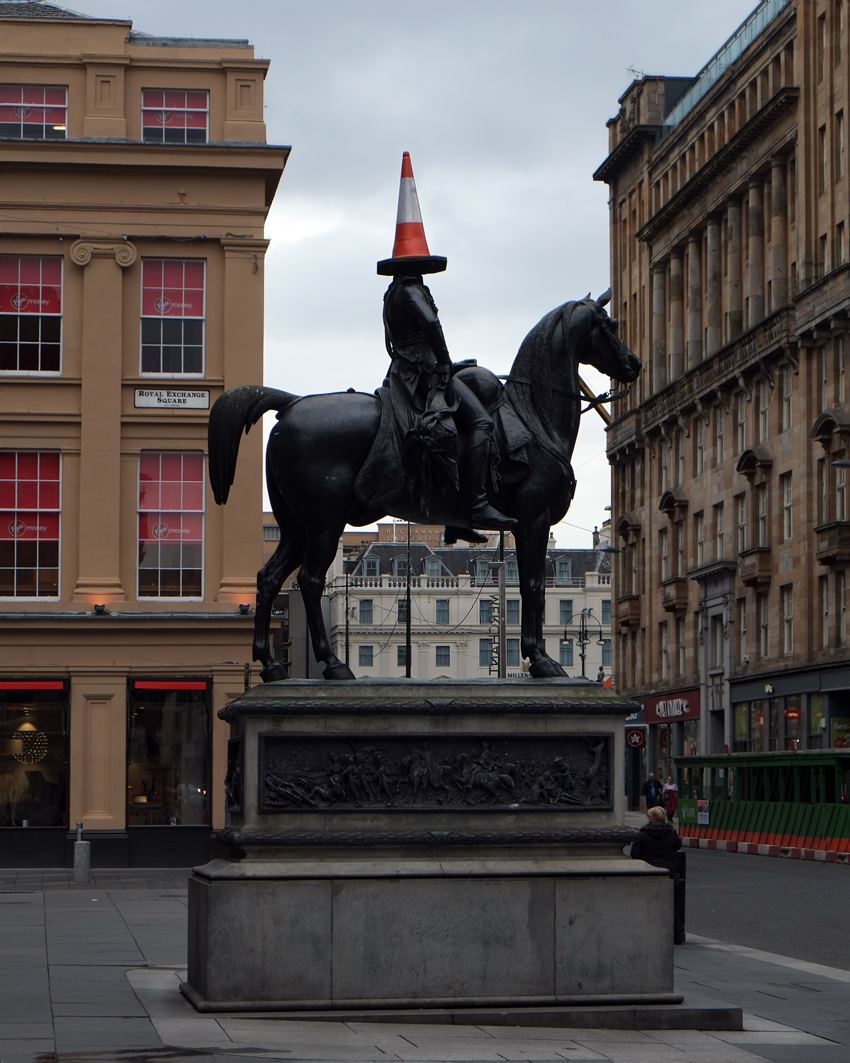 The Museum of Modern Art in Glasgow with the famous statue of the Duke of Wellington with the traffic cone . . . yes, it is an art installation.
The Museum of Modern Art in Glasgow with the famous statue of the Duke of Wellington with the traffic cone . . . yes, it is an art installation.
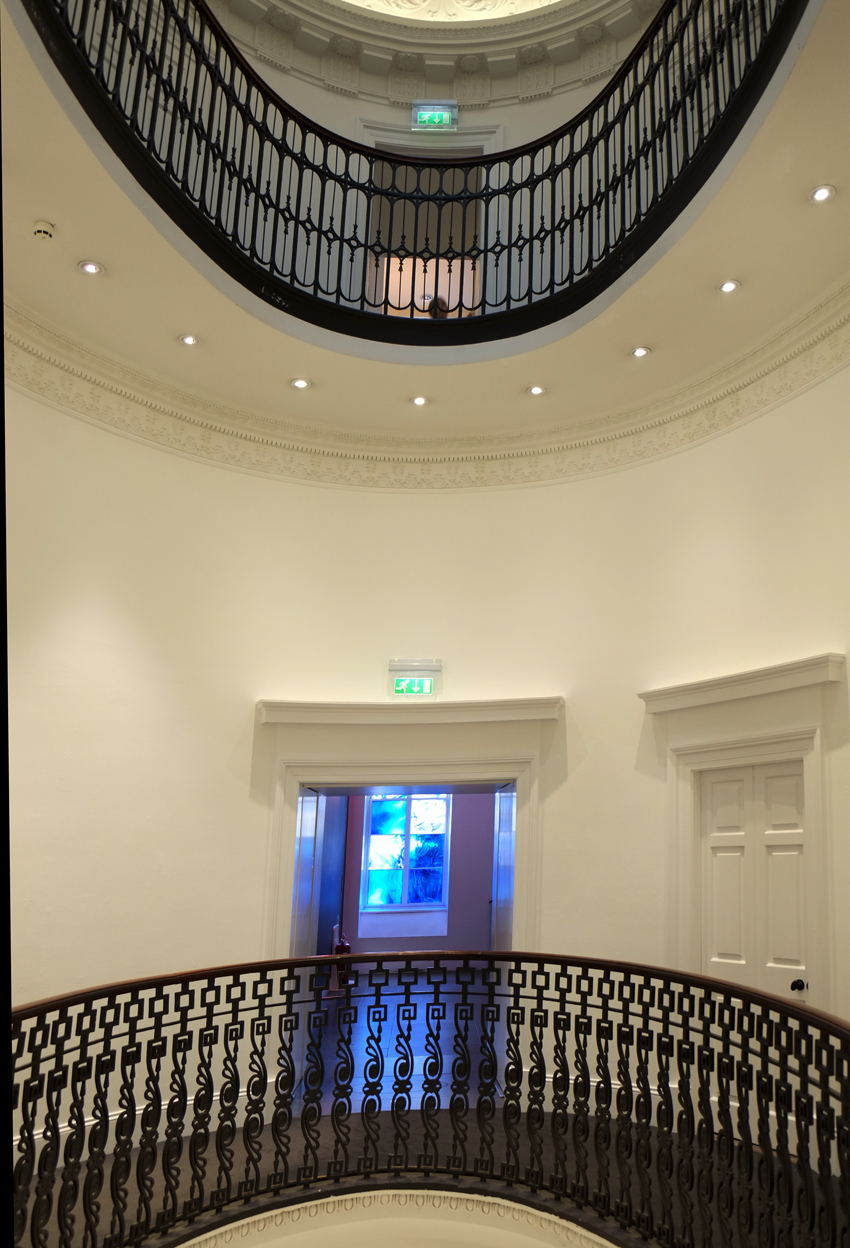 The interior of the Glasgow Museum of Modern Art.
The interior of the Glasgow Museum of Modern Art.
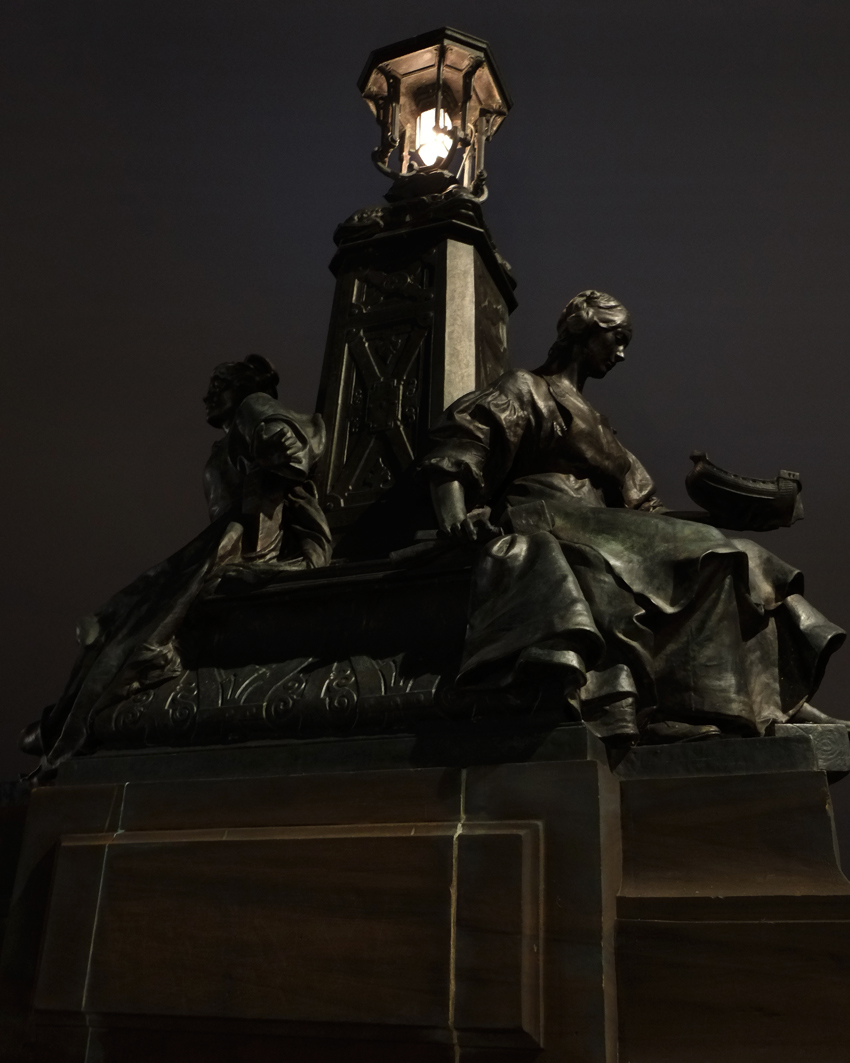 We love to walk around Glasgow. There is so much public art there . . . .
We love to walk around Glasgow. There is so much public art there . . . .
Scotland Photos: Dunnottar Castle Sunrise
 Saturday, September 12, 2015 at 5:26PM
Saturday, September 12, 2015 at 5:26PM  Famous Dunnottar Castle along the Aberdeenshire coast with the North Sea.
Famous Dunnottar Castle along the Aberdeenshire coast with the North Sea.
 An ever-changing sunrise.
An ever-changing sunrise.
 Morning flowers near Dunnottar Castle.
Morning flowers near Dunnottar Castle.
 New bloom.
New bloom.
 A nice hedge bloom.
A nice hedge bloom.
 The thistle is the symbol of Scotland.
The thistle is the symbol of Scotland.
 This was a good time of the year to see the thistle in full bloom.
This was a good time of the year to see the thistle in full bloom.
 Wonderful thistle.
Wonderful thistle.
 Scottish thistle.
Scottish thistle.
 A snail in the underbrush.
A snail in the underbrush.
 Morning light on the way.
Morning light on the way.
 Amazing Dunnottar Castle.
Amazing Dunnottar Castle.
 Another new day.
Another new day.
Visitor from Bangkok (Via Liverpool): Aberdeenshire Ramblings - Scotland Photos
 Monday, July 13, 2015 at 1:11AM
Monday, July 13, 2015 at 1:11AM As always, it's great to see old friend visit. It's an opportunity to catch up . . . and to take a romp around the western end of Aberdenshire to see what we can see . . . yaking all the way!
 An Aberdeenshire Road in July . . . a bit of a chilly day with the sun sharing the sky with threatening clouds.
An Aberdeenshire Road in July . . . a bit of a chilly day with the sun sharing the sky with threatening clouds.
 The countryside here is very dreamlike . . the clouds being pushed and rolled up in the face of an approaching storm front.
The countryside here is very dreamlike . . the clouds being pushed and rolled up in the face of an approaching storm front.
 As is always the case when driving around the small roads and farm lanes of Aberdeenshire, there is inevitably a sign point to a castle.
As is always the case when driving around the small roads and farm lanes of Aberdeenshire, there is inevitably a sign point to a castle.
 Today it was out good luck to 'discover' Craigievar Castle - the family home of the Forbes clan for 350 years (acquired in 1610).
Today it was out good luck to 'discover' Craigievar Castle - the family home of the Forbes clan for 350 years (acquired in 1610).
 Craigievar Castle is said to be one of the finest examples of the 'tower' types of castles still remaining in Scotland. We did not take to tour . . . .
Craigievar Castle is said to be one of the finest examples of the 'tower' types of castles still remaining in Scotland. We did not take to tour . . . .
 Lovely scene.
Lovely scene.
 My scouser friend enjoyed it, but said it was "not really a castle by British standards" but only a "keep." He may have a point.
My scouser friend enjoyed it, but said it was "not really a castle by British standards" but only a "keep." He may have a point.
 The grounds were beautiful too . . . with gates, paths and hidden gardens.
The grounds were beautiful too . . . with gates, paths and hidden gardens.
 Peeking into the castle gardeners cottage.
Peeking into the castle gardeners cottage.
 Craigievar Castle stands on a hill, of course, and has a commanding view of the shire.
Craigievar Castle stands on a hill, of course, and has a commanding view of the shire.
 Sometimes you spot something interesting from the road and pull over to investigate. As it turned out, this is the early 19th century Ladymill Farm, a candidate for official listing.
Sometimes you spot something interesting from the road and pull over to investigate. As it turned out, this is the early 19th century Ladymill Farm, a candidate for official listing.
 With the sunlight coming and going, I had to work fast to get these shots of the charming old farm buildings.
With the sunlight coming and going, I had to work fast to get these shots of the charming old farm buildings.
 I indulged my fascination with old doors and . . . .
I indulged my fascination with old doors and . . . .
 . . . and windows.
. . . and windows.
 This may have been my favorite photo of the day. Scrumptious.
This may have been my favorite photo of the day. Scrumptious.
 Of course, Ladymill was a mill . . . and a few of the old machine parts were scattered here and there.
Of course, Ladymill was a mill . . . and a few of the old machine parts were scattered here and there.
 I took a walk around the back of Ladymill and was greeted with this vision from a dream: the perfect countryside scene . . light dancing across the fields of green. Extraordinary beauty.
I took a walk around the back of Ladymill and was greeted with this vision from a dream: the perfect countryside scene . . light dancing across the fields of green. Extraordinary beauty.
 We left Ladymill just ahead of a downpour . . . .and went looking for a place to eat.
We left Ladymill just ahead of a downpour . . . .and went looking for a place to eat.
 There is so much to photograph in Aberdeenshire.
There is so much to photograph in Aberdeenshire.
 We stopped at several roadside hotels and tea houses but for some unknown reason they all had signs posted saying "Closed on Tuesday." Why? We followed a small road for a few miles to "Leith Hall and Tea Room." We arrived in a driving rain only to discover it was closed too. Leith Hall was a private estate built in 1650. Leith Hall is said to be haunted by a ghost: "The hall is reportedly haunted,[3][7] and has been subject to an investigation by Most Haunted. This ghost is believed to be Laird John Leith III who was killed on Christmas Day in 1763 in Aberdeen at Archie Campbell's Tavern in the Castlegate during a drunken brawl in which he was shot in the head, after he reacted angrily to a fellow diner who accused him of adulterating the grain sold from Leith Hall.[3][7] The ghost of John is said to appear in great pain with a dirty white bandage over his head and covering his eyes, wearing dark green trousers and a shirt.[3] In 1968, one guest awoke during the night to see John in highland dress, his head covered in bloody bandages, standing at the foot of the bed.[3] Other apparitions have also been sighted. Several writers who've stayed at the manor have reported seeing paranormal phenomenon. Elizabeth Byrd wrote about her experiences in her book A Strange and Seeing Time and describes the time that she rented the East Wing of Leith Hall with her husband in 1986.[3] Alanna Knight has also written about her ghostly encounters at Leith Hall."
We stopped at several roadside hotels and tea houses but for some unknown reason they all had signs posted saying "Closed on Tuesday." Why? We followed a small road for a few miles to "Leith Hall and Tea Room." We arrived in a driving rain only to discover it was closed too. Leith Hall was a private estate built in 1650. Leith Hall is said to be haunted by a ghost: "The hall is reportedly haunted,[3][7] and has been subject to an investigation by Most Haunted. This ghost is believed to be Laird John Leith III who was killed on Christmas Day in 1763 in Aberdeen at Archie Campbell's Tavern in the Castlegate during a drunken brawl in which he was shot in the head, after he reacted angrily to a fellow diner who accused him of adulterating the grain sold from Leith Hall.[3][7] The ghost of John is said to appear in great pain with a dirty white bandage over his head and covering his eyes, wearing dark green trousers and a shirt.[3] In 1968, one guest awoke during the night to see John in highland dress, his head covered in bloody bandages, standing at the foot of the bed.[3] Other apparitions have also been sighted. Several writers who've stayed at the manor have reported seeing paranormal phenomenon. Elizabeth Byrd wrote about her experiences in her book A Strange and Seeing Time and describes the time that she rented the East Wing of Leith Hall with her husband in 1986.[3] Alanna Knight has also written about her ghostly encounters at Leith Hall."
 If you look closely through the trees, sometimes you can see an old castle ruin. Aberdeenshire! This is Corse Castle, c. 1581. We finally decided to drive to the proper town of Huntly where I knew there would be an open restaurant. We did, and it was.
If you look closely through the trees, sometimes you can see an old castle ruin. Aberdeenshire! This is Corse Castle, c. 1581. We finally decided to drive to the proper town of Huntly where I knew there would be an open restaurant. We did, and it was.
 After a fine greasy spoon lunch in a cafe nest to the Huntly Police Station, we consulted the GPS for the nearest distillery . . . it would be a shame for my friend to visit Scotland without going to a distillery. Our luck was good: the GlenDonronach Distillery was nearby. Being too late for the tour and tasting (it closed at 4:15pm!!), we instead took the very helpful gift shop lady's suggestion and bought a mini-bottle of their 21 Year Old Parliament . . . and WOW! Delicious . . . and I do not drink whiskey! My friend IS a whiskey drinker and proclaimed it a 97 out of 100. "Matured in a combination of the finest Oroso and Pedro Ximenez sherry casks for a minimum of 21 years, the 'Parliament' continues the great GlenDronach tradition of offering fruit-laden intensity in its single malts. Bottled at 48%, the 'Parliament' is non chill filtered and of natural color. Highly recommended, even if you do drink whiskey!
After a fine greasy spoon lunch in a cafe nest to the Huntly Police Station, we consulted the GPS for the nearest distillery . . . it would be a shame for my friend to visit Scotland without going to a distillery. Our luck was good: the GlenDonronach Distillery was nearby. Being too late for the tour and tasting (it closed at 4:15pm!!), we instead took the very helpful gift shop lady's suggestion and bought a mini-bottle of their 21 Year Old Parliament . . . and WOW! Delicious . . . and I do not drink whiskey! My friend IS a whiskey drinker and proclaimed it a 97 out of 100. "Matured in a combination of the finest Oroso and Pedro Ximenez sherry casks for a minimum of 21 years, the 'Parliament' continues the great GlenDronach tradition of offering fruit-laden intensity in its single malts. Bottled at 48%, the 'Parliament' is non chill filtered and of natural color. Highly recommended, even if you do drink whiskey!
 After the distillery we headed back home to Aberdeen. We spotted a grand church up on a hillside and went up a farm lane to take a look.
After the distillery we headed back home to Aberdeen. We spotted a grand church up on a hillside and went up a farm lane to take a look.
 A beautiful road and church. St Margaret's Episcopal Church was built in the mid 19th century by architect William Ramage.
A beautiful road and church. St Margaret's Episcopal Church was built in the mid 19th century by architect William Ramage.
 The church had some fine old gravestones.
The church had some fine old gravestones.
 Wonderful patterned symbol.
Wonderful patterned symbol.
 There were some broken stones in the cemetery that had had the pieces sweetly leaned against each other.
There were some broken stones in the cemetery that had had the pieces sweetly leaned against each other.
 I couldn't tell if these stones had been vandalized or broken by falling tree limbs.
I couldn't tell if these stones had been vandalized or broken by falling tree limbs.
 The view from the cemetery.
The view from the cemetery.
 It had been a wonderful day of just driving around talking in the car . . . through some of the most beautiful scenery in the world.
It had been a wonderful day of just driving around talking in the car . . . through some of the most beautiful scenery in the world.
 Aberdeenshire.
Aberdeenshire.
Road Trip: My Hippie Pilgrimage to Findhorn
 Sunday, March 29, 2015 at 4:00AM
Sunday, March 29, 2015 at 4:00AM  I had a week of vacation in February 2015 so I decided to take a couple of days and drive the two hours north to the mythical village of Findhorn, on the Moray coast. I say mythical because during the high times of the 1960's hippie days (daze?), stories from and about 'Findhorn' (actually the Findhorn Foundation, one of the first intentional communities . . . essentially a commune) played large in the mythopoetics of the counter culture. Tales of giant vegetables, communing with extra terrestrials, and telepathy were often associated with 'Findhorn.' But Findhorn is also a quaint village and one-time major sea port. I stayed in the 287 year old Crown and Anchor Inn. Lovely.
I had a week of vacation in February 2015 so I decided to take a couple of days and drive the two hours north to the mythical village of Findhorn, on the Moray coast. I say mythical because during the high times of the 1960's hippie days (daze?), stories from and about 'Findhorn' (actually the Findhorn Foundation, one of the first intentional communities . . . essentially a commune) played large in the mythopoetics of the counter culture. Tales of giant vegetables, communing with extra terrestrials, and telepathy were often associated with 'Findhorn.' But Findhorn is also a quaint village and one-time major sea port. I stayed in the 287 year old Crown and Anchor Inn. Lovely.
 I was very lucky with the weather . . . well, the light , anyway. The temperature was around 36f (3c) in the daytime and 32f (0c) at night. Good fro February. Findhorn village was a treat to photograph.
I was very lucky with the weather . . . well, the light , anyway. The temperature was around 36f (3c) in the daytime and 32f (0c) at night. Good fro February. Findhorn village was a treat to photograph.
 Years of salty wind has weathered the town.
Years of salty wind has weathered the town.
 I scouted the town for lighting conditions before I brought my camera out (Fuji X-T1 with 56mm f1.2 lens).
I scouted the town for lighting conditions before I brought my camera out (Fuji X-T1 with 56mm f1.2 lens).
 The colors and textures of the aging surfaces were beautiful. I enjoyed this door with the home-made vent holes.
The colors and textures of the aging surfaces were beautiful. I enjoyed this door with the home-made vent holes.
 I took a walk out on the 300 year old quay to get a look at Findhorn.
I took a walk out on the 300 year old quay to get a look at Findhorn.
 Time, weather, sea water, and an invisible hand . . . .
Time, weather, sea water, and an invisible hand . . . .
 I have no idea how old these quay stanchions are . . . hundreds of years?
I have no idea how old these quay stanchions are . . . hundreds of years?
 Too much color and texture.
Too much color and texture.
 The village of Findhorn has a lot of Old World charm.
The village of Findhorn has a lot of Old World charm.
 Lovely old stone buildings with slate roofs.
Lovely old stone buildings with slate roofs.
 I enjoyed walking around in the quiet streets and lanes, looking for color and pattern.
I enjoyed walking around in the quiet streets and lanes, looking for color and pattern.
 The house next to the Crown & Anchor Inn was lovely.
The house next to the Crown & Anchor Inn was lovely.
 Although it was late Winter, everything was trimmed in Findhorn Village and waiting for Spring.
Although it was late Winter, everything was trimmed in Findhorn Village and waiting for Spring.
 In these far northern latitudes it seems like every hour is the golden hour for photography.
In these far northern latitudes it seems like every hour is the golden hour for photography.
 You could make a fine arts book on these small Scottish coastal village houses. Such a warm and lovely feeling.
You could make a fine arts book on these small Scottish coastal village houses. Such a warm and lovely feeling.
 The austere rough stone masonry has a beauty all its own. I like it . . . it is so organic.
The austere rough stone masonry has a beauty all its own. I like it . . . it is so organic.
 Nice color at this artist's house.
Nice color at this artist's house.
 The main avenue in Findhorn makes a loop . . . and comes back around to this church.
The main avenue in Findhorn makes a loop . . . and comes back around to this church.
 Along the end, and behind the town of Findhorn is the North Sea.
Along the end, and behind the town of Findhorn is the North Sea.
 I wasn't the only person out along the sea coast . . . but this man was a bird watcher . . . he had strong binoculars only.
I wasn't the only person out along the sea coast . . . but this man was a bird watcher . . . he had strong binoculars only.
 I went to the beach several times, once along this foot path.
I went to the beach several times, once along this foot path.
 The sun came and went all day long. The beach access though the dunes.
The sun came and went all day long. The beach access though the dunes.
 Very handy.
Very handy.
 The inviting North Sea.
The inviting North Sea.
 The wind was so strong it blew the sand from around any pilings around. . .
The wind was so strong it blew the sand from around any pilings around. . .
FINDHORN FOUNDATION - the place hippie dreams are made of. Although Findhorn village was sweet and quaint, I had come to pay my respects, and to personally see for myself, the famous Findhorn community, or commune as we hippies thought of it in the late 1960s, now known as the Findhorn Foundation.
Although Findhorn village was sweet and quaint, I had come to pay my respects, and to personally see for myself, the famous Findhorn community, or commune as we hippies thought of it in the late 1960s, now known as the Findhorn Foundation.
 I thought it funny how few expectations I had about Findhorn before coming here. I only knew of the stories of a community in Scotland that had people who could communicate with the nature spirits . . . who rewarded them with giant vegetables that grew out of unfertile, rocky soil.
I thought it funny how few expectations I had about Findhorn before coming here. I only knew of the stories of a community in Scotland that had people who could communicate with the nature spirits . . . who rewarded them with giant vegetables that grew out of unfertile, rocky soil.
 This could be anywhere in Jackson or Josephine counties in Oregon . . . hippie architectural chic.
This could be anywhere in Jackson or Josephine counties in Oregon . . . hippie architectural chic.
 Findhorn community was a trailer park (caravan park in the UK) before it was an intentional community and ecovillage. There are still some wonderful old trailer homes dotted around the property. This one has the requisite gnome and Beatles homage display. I'm glad there are trailer homes here . . if one is a renunciant, living a spiritual life, it doesn't really matter what you live in . . . and better to recycle than to cut trees or use other energy sources to construct a house . . .
Findhorn community was a trailer park (caravan park in the UK) before it was an intentional community and ecovillage. There are still some wonderful old trailer homes dotted around the property. This one has the requisite gnome and Beatles homage display. I'm glad there are trailer homes here . . if one is a renunciant, living a spiritual life, it doesn't really matter what you live in . . . and better to recycle than to cut trees or use other energy sources to construct a house . . .
 On the other hand, there were clusters of these rather Scandinavian eco-condos around the property as well. This is a part of the Findhorn Ecovillage, I think. I didn't get a map at the visitors center.
On the other hand, there were clusters of these rather Scandinavian eco-condos around the property as well. This is a part of the Findhorn Ecovillage, I think. I didn't get a map at the visitors center.
 It was a beautiful morning . . . the earliest signs of impending Spring were everywhere.
It was a beautiful morning . . . the earliest signs of impending Spring were everywhere.
 There were plenty of unconventional structures everywhere . . . .
There were plenty of unconventional structures everywhere . . . .
 It was nice to see that there is another spiritual traveller on this planet who will return again because of attachments to fast and cool cars. Yes, this is a 1953 MG-TD. Findhorn is NOT a monastery.
It was nice to see that there is another spiritual traveller on this planet who will return again because of attachments to fast and cool cars. Yes, this is a 1953 MG-TD. Findhorn is NOT a monastery.
 There are many interesting things to look at around Findhorn. The old sits beside the new and the funky beside the modern.
There are many interesting things to look at around Findhorn. The old sits beside the new and the funky beside the modern.
 The '60s counter culture aesthetic abound.
The '60s counter culture aesthetic abound.
 The Findhorn Foundation runs a program of spiritual and therapeutic workshops throughout the year. I am assuming these come from a sensitivity training workshop, but I am at a loss as to how the therapist/facilitator uses them. Very photographically interesting, however.
The Findhorn Foundation runs a program of spiritual and therapeutic workshops throughout the year. I am assuming these come from a sensitivity training workshop, but I am at a loss as to how the therapist/facilitator uses them. Very photographically interesting, however.

This is the current Findhorn Foundation program as of April 1, 2015.
 I hoped these were where they were as a result of a Graffiti and The Self workshop.
I hoped these were where they were as a result of a Graffiti and The Self workshop.
 Workshop activity or resident youth protestation, or both?
Workshop activity or resident youth protestation, or both?
 I'm glad I had my camera with me . . .
I'm glad I had my camera with me . . .
 I am in the habit as seeing human artifacts as just that: the work of an individual person on a particular day and time. I have this feel about almost everything I see and touch that is of human origin.
I am in the habit as seeing human artifacts as just that: the work of an individual person on a particular day and time. I have this feel about almost everything I see and touch that is of human origin.
 The sales office trailer home for the new, yet to be started, condominium project - £78,000.oo for a one bedroom flat.
The sales office trailer home for the new, yet to be started, condominium project - £78,000.oo for a one bedroom flat.
 Time and weather.
Time and weather.
 A good place for old friends to meet and shoot the spiritual breeze . . . some time ago. How about fixing this one up . . .
A good place for old friends to meet and shoot the spiritual breeze . . . some time ago. How about fixing this one up . . .
 I decided to see if I could find my way from the Ecovillage through the dunes and on to the North Sea. There must be a path.
I decided to see if I could find my way from the Ecovillage through the dunes and on to the North Sea. There must be a path.
 Indeed, there was a beautiful path though an extraordinary wood.
Indeed, there was a beautiful path though an extraordinary wood.
 The woods are managed, not wild.
The woods are managed, not wild.
 A quiet wood.
A quiet wood.
 If you erect a wind power generating tower near a hippie commune you have to expect the graffiti is going to be cosmic.
If you erect a wind power generating tower near a hippie commune you have to expect the graffiti is going to be cosmic.
 The wooded path led me through the dunes.
The wooded path led me through the dunes.
 The Scots are great about providing well marked trails through nature . . . nature walks everywhere.
The Scots are great about providing well marked trails through nature . . . nature walks everywhere.
 Down to the beach . . . again.
Down to the beach . . . again.
 The dunes were sandy, but the beach was a stretch of small pebbles for five miles all the way to Burghead.
The dunes were sandy, but the beach was a stretch of small pebbles for five miles all the way to Burghead.
 A stones' throw from the spiritual community were these WWII bunkers that had been eroded into the sea . . . I guess there might be a silver lining to this sea level rise . . . .
A stones' throw from the spiritual community were these WWII bunkers that had been eroded into the sea . . . I guess there might be a silver lining to this sea level rise . . . .
 WWII bunker . . .
WWII bunker . . .
Burghead I spent a good part of each day exploring the other seaside villages in the area. This is Burghead . . . a village built on a small peninsula. The town is surrounded on three sides by the North Sea.
I spent a good part of each day exploring the other seaside villages in the area. This is Burghead . . . a village built on a small peninsula. The town is surrounded on three sides by the North Sea.
 Fishermen's houses in Burghead . . . a very windswept and austere town.
Fishermen's houses in Burghead . . . a very windswept and austere town.
 Burghead harbour looking west from up on the promontory park at the end of the town.
Burghead harbour looking west from up on the promontory park at the end of the town.
 The views from the Burghead Visitors Center looking east were scrumptious. I could barely stand up or hold the camera steady in the 80-90kph wind!.
The views from the Burghead Visitors Center looking east were scrumptious. I could barely stand up or hold the camera steady in the 80-90kph wind!.
 The Burghead Visitors Center marks the end of the peninsula . . . along with a monument marking the site of an ancient Pictish fort dating back thousands of years. In fact, Burghead is believed to be the city Castra Alata in Ptolemy's early geography of the British Isles.
The Burghead Visitors Center marks the end of the peninsula . . . along with a monument marking the site of an ancient Pictish fort dating back thousands of years. In fact, Burghead is believed to be the city Castra Alata in Ptolemy's early geography of the British Isles.
 Not much is left of the Pictish fort as a result of the harbour construction in the 19th century. The ocean views here were fantastic. The wind was incredible!
Not much is left of the Pictish fort as a result of the harbour construction in the 19th century. The ocean views here were fantastic. The wind was incredible!
 These homes were situated out on the unsheltered tip of the Burghead peninsula.
These homes were situated out on the unsheltered tip of the Burghead peninsula.
 Every house in Burghead has this view of Findhorn Bay.
Every house in Burghead has this view of Findhorn Bay.
 I drove through the little sea port town of Hopeman on my way to Lossiemouth. I loved the place names in Moray.
I drove through the little sea port town of Hopeman on my way to Lossiemouth. I loved the place names in Moray.
 Although most of the coast is rocky, there are are also beautiful beaches around Hopeman.
Although most of the coast is rocky, there are are also beautiful beaches around Hopeman.
 The sea and beaches here were beautiful, but there were many low flying jet planes near Findhorn and Lossiemouth, both of which have major British Airforce bases nearby.
The sea and beaches here were beautiful, but there were many low flying jet planes near Findhorn and Lossiemouth, both of which have major British Airforce bases nearby.
 The road into Lossiemouth passed yet another golf course. Yes, Scotland is the home of golf and you see golf courses everywhere you go. I tried to go to that lighthouse you can see in the background but failed to find the access road! I was disappointed.
The road into Lossiemouth passed yet another golf course. Yes, Scotland is the home of golf and you see golf courses everywhere you go. I tried to go to that lighthouse you can see in the background but failed to find the access road! I was disappointed.
 Lossiemouth has been a settlement or town for over 1000 years. It also has a fine, photogenic harbour.
Lossiemouth has been a settlement or town for over 1000 years. It also has a fine, photogenic harbour.
 The city fathers of Lossiemouth did a fine of developing the old warehouses along the quay into shops and restaurants.
The city fathers of Lossiemouth did a fine of developing the old warehouses along the quay into shops and restaurants.
 Lossiemouth harbour is protected by mammoth sea walls. The North Sea is a wild sea.
Lossiemouth harbour is protected by mammoth sea walls. The North Sea is a wild sea.
 A wonderful old launch and it's reflection at rest in Lossiemouth Harbour.
A wonderful old launch and it's reflection at rest in Lossiemouth Harbour.
 A surreal Lossiemouth breakwater holding back the pulses of the North Sea.
A surreal Lossiemouth breakwater holding back the pulses of the North Sea.
 Many beautiful scenes to see . . .
Many beautiful scenes to see . . .
 I stopped in at a picturesque 19th century hotel for a delicious double latte.
I stopped in at a picturesque 19th century hotel for a delicious double latte.
 There was a nice beach just outside of Lossiemouth.
There was a nice beach just outside of Lossiemouth.
 Lossiemouth beach access.
Lossiemouth beach access.
 I hated to leave Lossiemouth and vowed to return one day to explore it more thoroughly. But I had a few stops marked on the map to see before it got dark . . .and I didn't want to be out on the small roads on my way back to Aberdeen in the dark.
I hated to leave Lossiemouth and vowed to return one day to explore it more thoroughly. But I had a few stops marked on the map to see before it got dark . . .and I didn't want to be out on the small roads on my way back to Aberdeen in the dark.
 My next stop was the rural Birnie Kirk, founded in 1040, but burned and sacked many times. The structure you see here is still the original 12th century construction.
My next stop was the rural Birnie Kirk, founded in 1040, but burned and sacked many times. The structure you see here is still the original 12th century construction.
 The old folk had no trouble accepting the fact that we would be bones one day . . . and our dearly departed would be bones too. I've seen these skull and bones grave stones throughout Scotland.
The old folk had no trouble accepting the fact that we would be bones one day . . . and our dearly departed would be bones too. I've seen these skull and bones grave stones throughout Scotland.
 Although it was a beautiful (but cold) day when I was there, the moss and lichen on these grave stones indicate a wetter climate.
Although it was a beautiful (but cold) day when I was there, the moss and lichen on these grave stones indicate a wetter climate.
 Birnie Kirkegaard (that's 'churchyard' in Danish) was a beautiful place to contemplate my mortality.
Birnie Kirkegaard (that's 'churchyard' in Danish) was a beautiful place to contemplate my mortality.
 Ironically, although it was mid-winter, the first signs of an approaching Spring I had seen this year were these snow drops blooming on the graves at Birnie Kirke.
Ironically, although it was mid-winter, the first signs of an approaching Spring I had seen this year were these snow drops blooming on the graves at Birnie Kirke.
 I really enjoyed hustling my little boy-racer Juke NISMO around the twisty country lanes of Moray. It is the perfect car for this purpose . . . it even has torque-vectored AWD for when the road gets slick. Fun, fun, fun.
I really enjoyed hustling my little boy-racer Juke NISMO around the twisty country lanes of Moray. It is the perfect car for this purpose . . . it even has torque-vectored AWD for when the road gets slick. Fun, fun, fun.
 A perfect mid-February winter's day in Moray, Scotland.
A perfect mid-February winter's day in Moray, Scotland.
The Amazing Spynie Palace Sometimes you get lucky. While driving home to Aberdeen on a small shire road I spotted a sign that directed me up a drive to Spynie Palace. I arrived at this gate house and parked.
Sometimes you get lucky. While driving home to Aberdeen on a small shire road I spotted a sign that directed me up a drive to Spynie Palace. I arrived at this gate house and parked.
 I had no idea what to expect as I walked up the tree lined gravel road. It was a perfect day.
I had no idea what to expect as I walked up the tree lined gravel road. It was a perfect day.
 I began to make out the shape of something though the trees . . . .
I began to make out the shape of something though the trees . . . .
 At last . . . I got a good glimpse of the palace tower. Wow.
At last . . . I got a good glimpse of the palace tower. Wow.
 There it is. Wow! Spynie Palace, also known as Spynie Castle, was the fortified seat of the Bishops of Moray for about 500 years. The founding of the palace dates back to the late 12th Century.
There it is. Wow! Spynie Palace, also known as Spynie Castle, was the fortified seat of the Bishops of Moray for about 500 years. The founding of the palace dates back to the late 12th Century.
 Talk about serendipity! Spynie Palace has a fabulous history . . . "Ruxby, an agent provocateur of Elizabeth I of England, who had tried to lead Mary, Queen of Scots, into a plot with English Roman Catholics, was imprisoned in Spynie Castle in 1566 for eighteen months.
Talk about serendipity! Spynie Palace has a fabulous history . . . "Ruxby, an agent provocateur of Elizabeth I of England, who had tried to lead Mary, Queen of Scots, into a plot with English Roman Catholics, was imprisoned in Spynie Castle in 1566 for eighteen months.
 The palace is surrounded by spectacular Scottish countryside.
The palace is surrounded by spectacular Scottish countryside.
 The clear light, deep shadow, and color of sky and castle were perfectly coordinated for these wonderful photographs.
The clear light, deep shadow, and color of sky and castle were perfectly coordinated for these wonderful photographs.
 I enjoyed walking around the tower thinking about what would make an interesting angle for a photograph. I didn't have to think too much . . . . I'm glad I had my new polarizing filter with me to try out.
I enjoyed walking around the tower thinking about what would make an interesting angle for a photograph. I didn't have to think too much . . . . I'm glad I had my new polarizing filter with me to try out.
 There was a visitors' center . . . closed except for the toilets (thank goodness!).
There was a visitors' center . . . closed except for the toilets (thank goodness!).
 This was the only decorative element on the otherwise austere tower structure.
This was the only decorative element on the otherwise austere tower structure.
 Spynie Palace was built in many phases over it's 900 year history. The chapel (left) and other structures were under restoration by Historic Scotland, which I am a member.
Spynie Palace was built in many phases over it's 900 year history. The chapel (left) and other structures were under restoration by Historic Scotland, which I am a member.
 Chapel and quarters.
Chapel and quarters.
 Partially restored chapel and former main gate.
Partially restored chapel and former main gate.
 The Moray countryside in winter on a clear, cold day.
The Moray countryside in winter on a clear, cold day.
 I took hundreds of great photos here . . . but, alas, I can only share a few of them here. It was a magic afternoon in Scotland.
I took hundreds of great photos here . . . but, alas, I can only share a few of them here. It was a magic afternoon in Scotland.
 I'll be back in the summer to be able to go inside the tower.
I'll be back in the summer to be able to go inside the tower.
 I made a wrong turn, as if pulled by an inviable force, into a little village and suddenly stopped beside a dilapidated corrugated shed . . . my obsession!
I made a wrong turn, as if pulled by an inviable force, into a little village and suddenly stopped beside a dilapidated corrugated shed . . . my obsession!
 I made it home before dark, and this big rain cloud . . . . Another memorable couple of days in Scotland.
I made it home before dark, and this big rain cloud . . . . Another memorable couple of days in Scotland.
